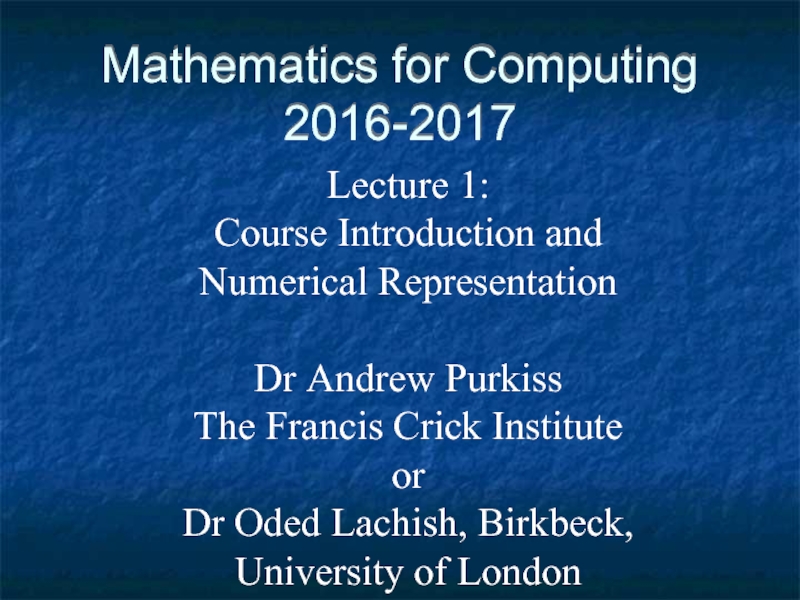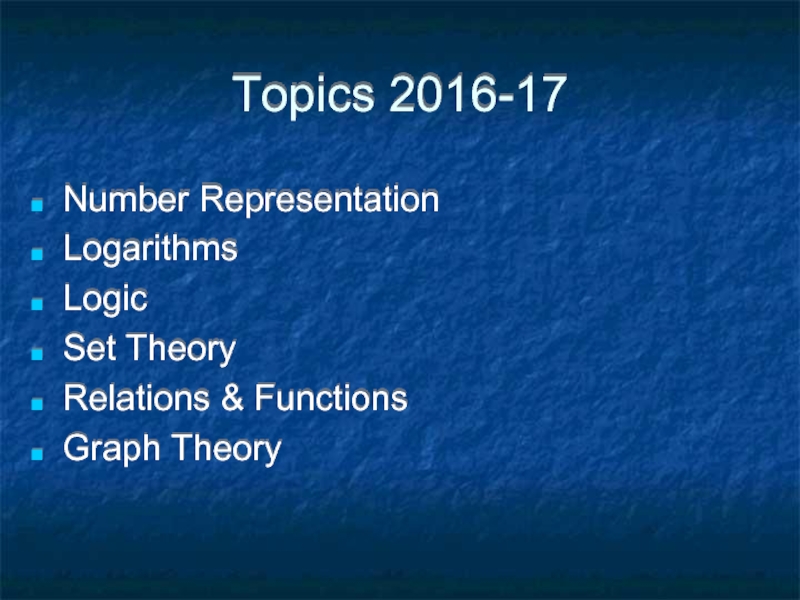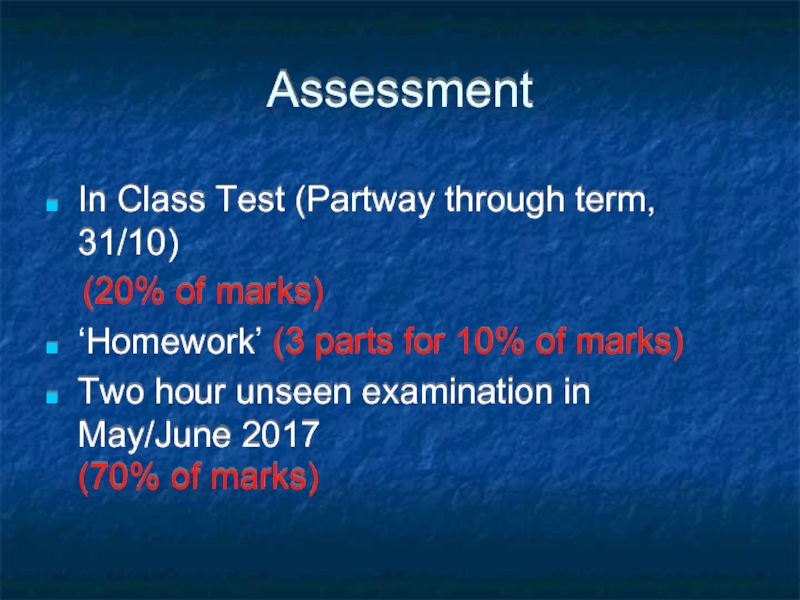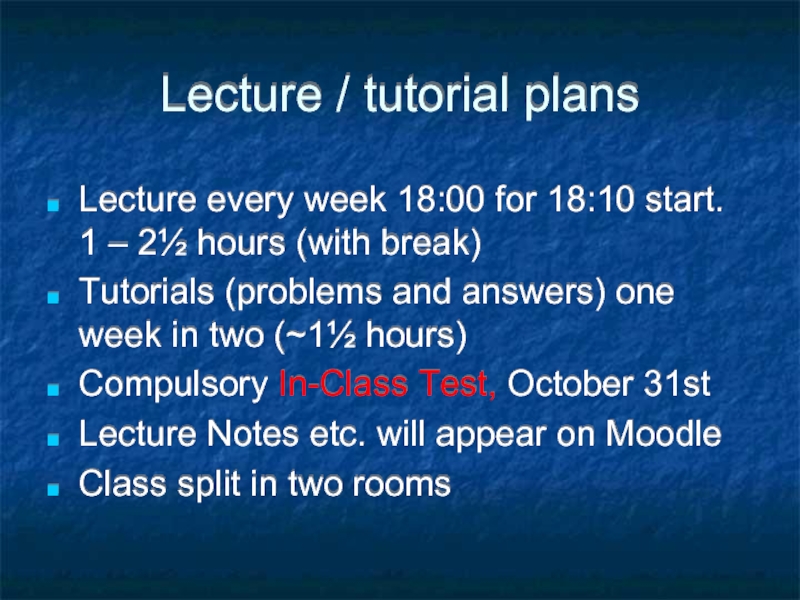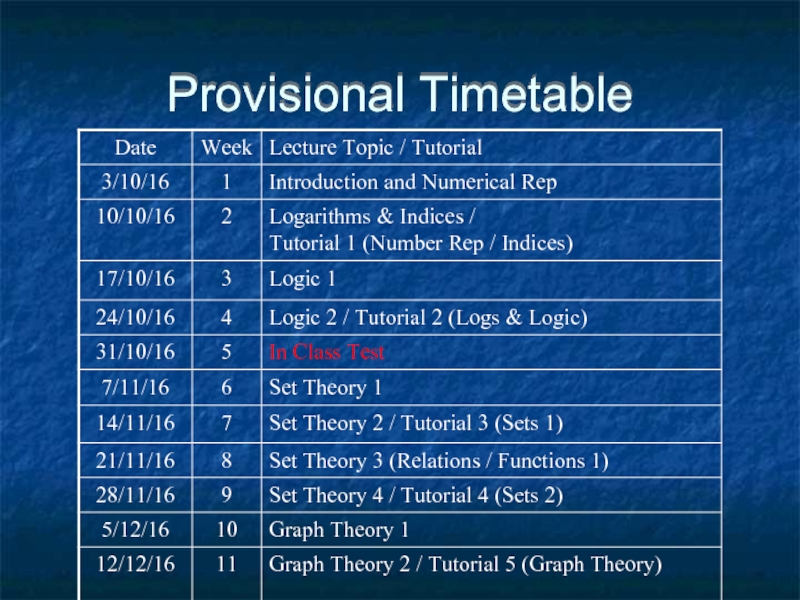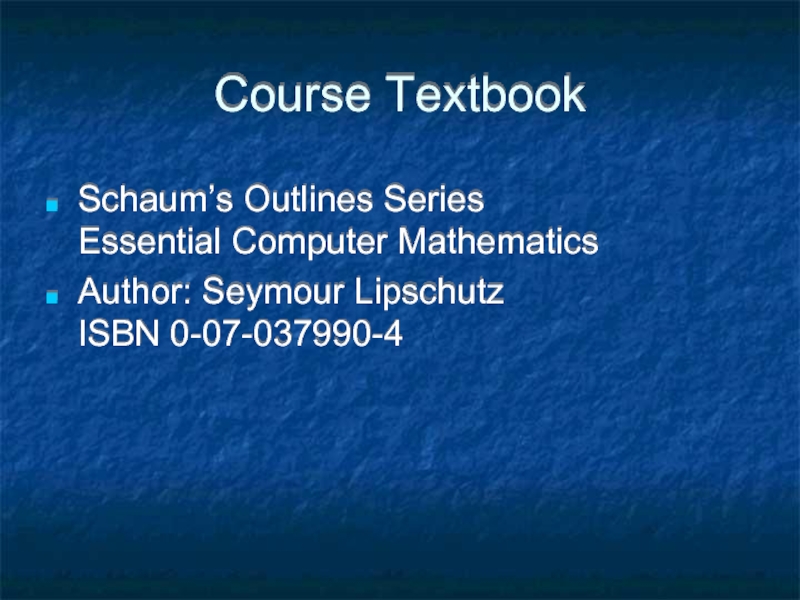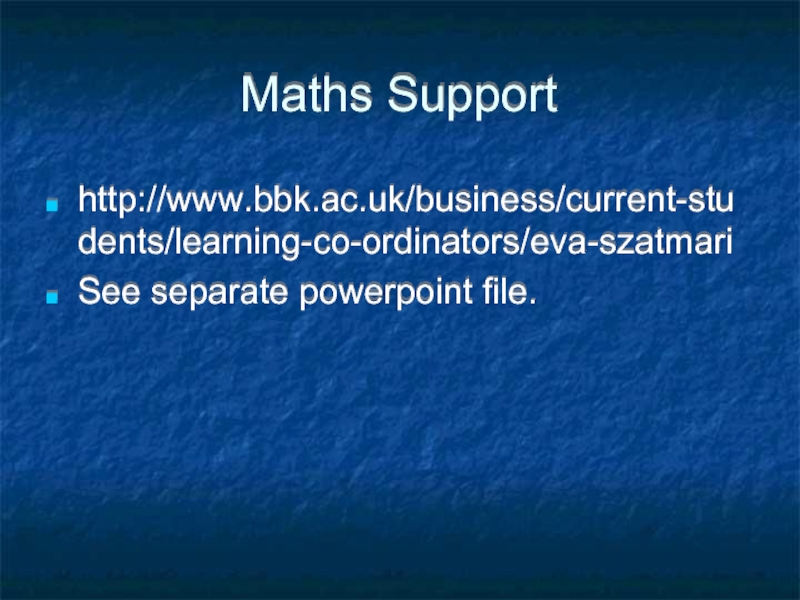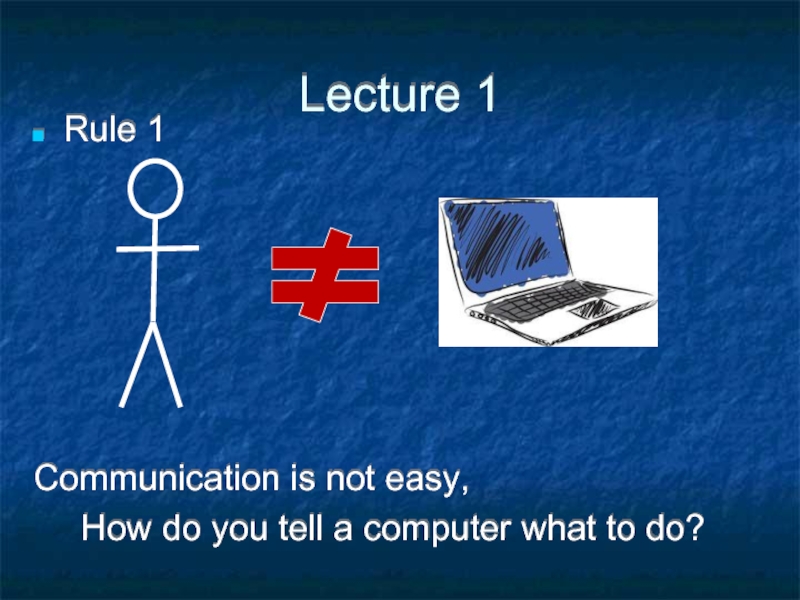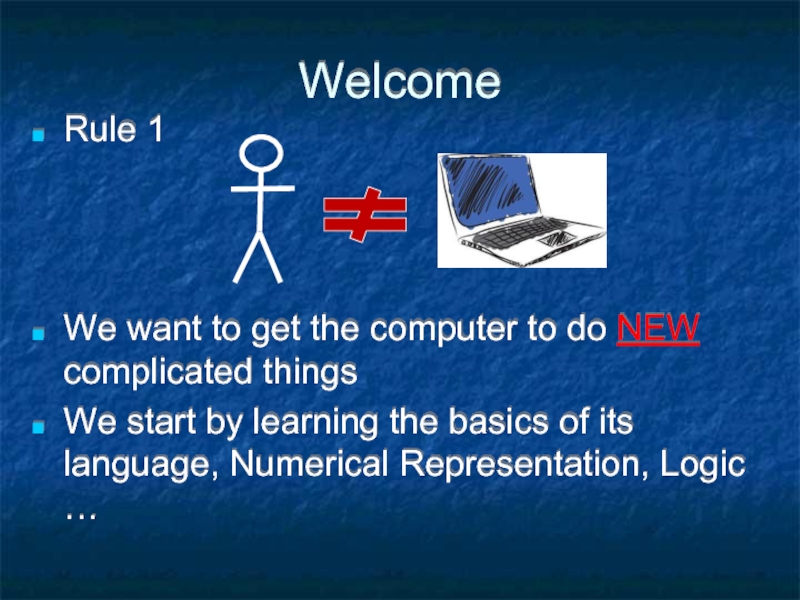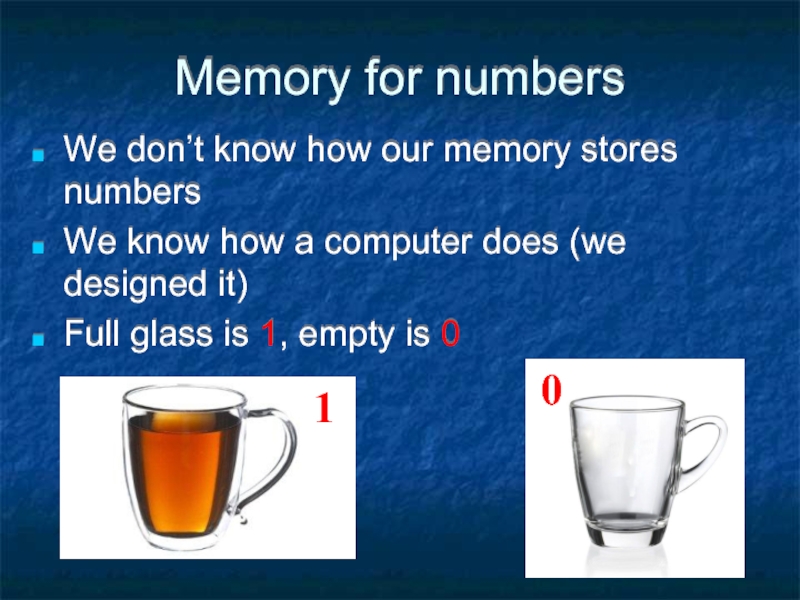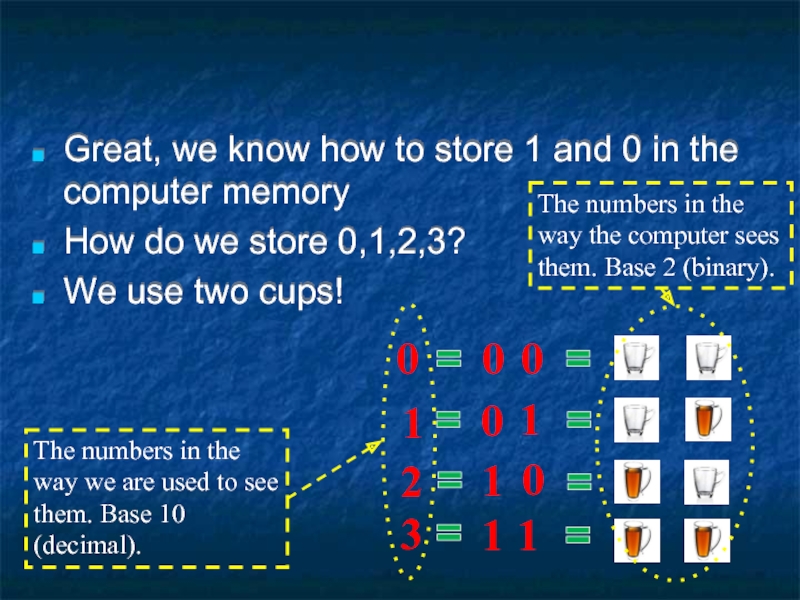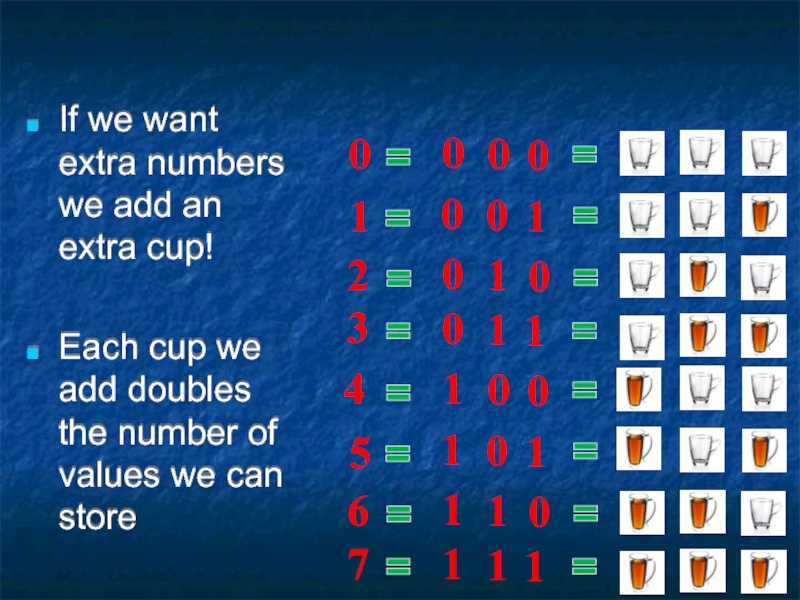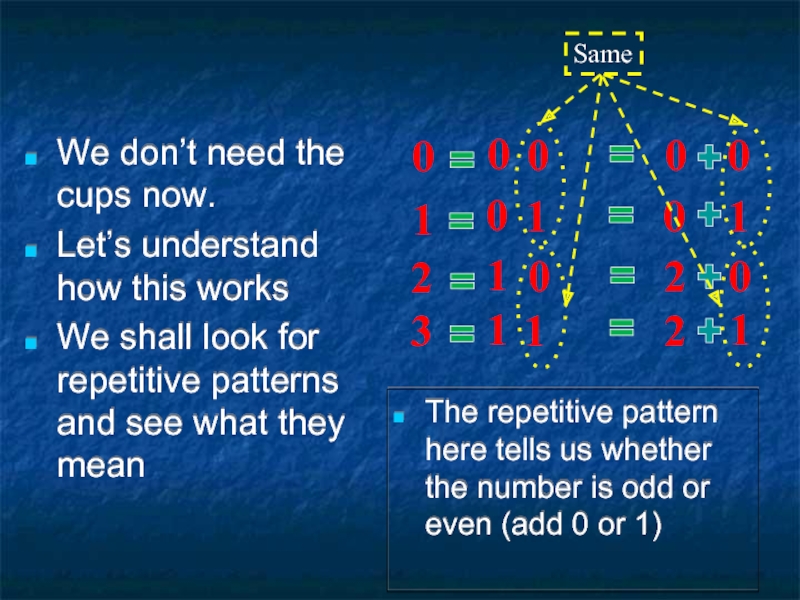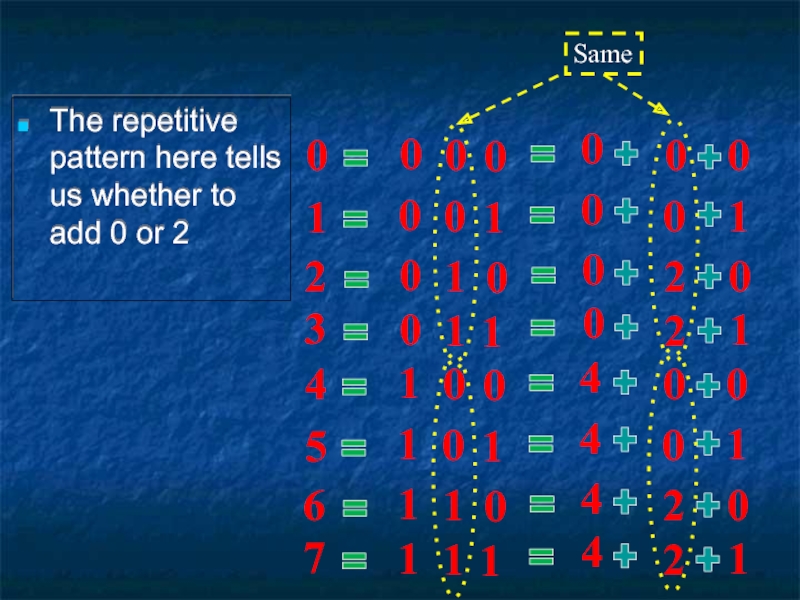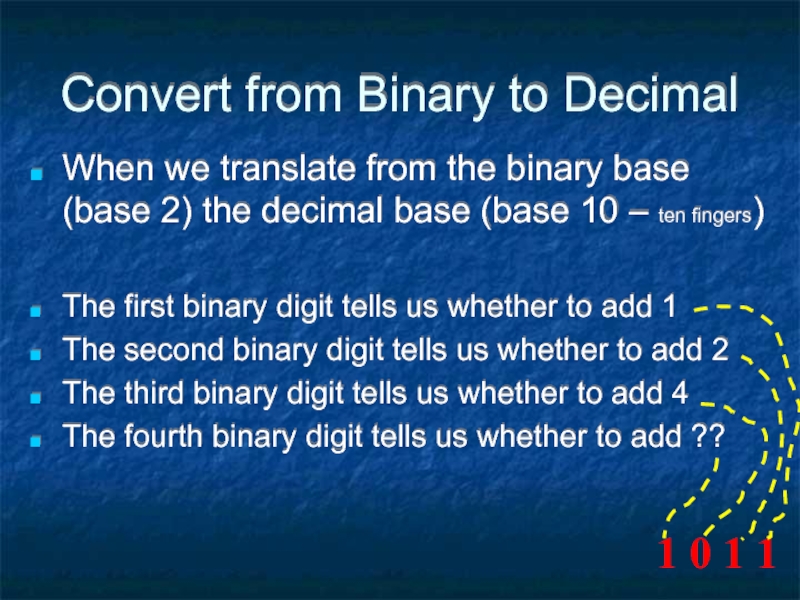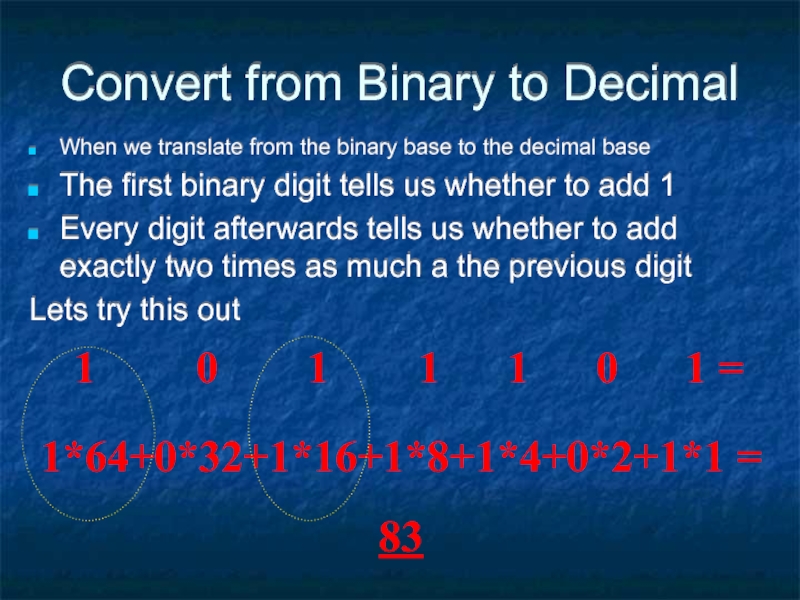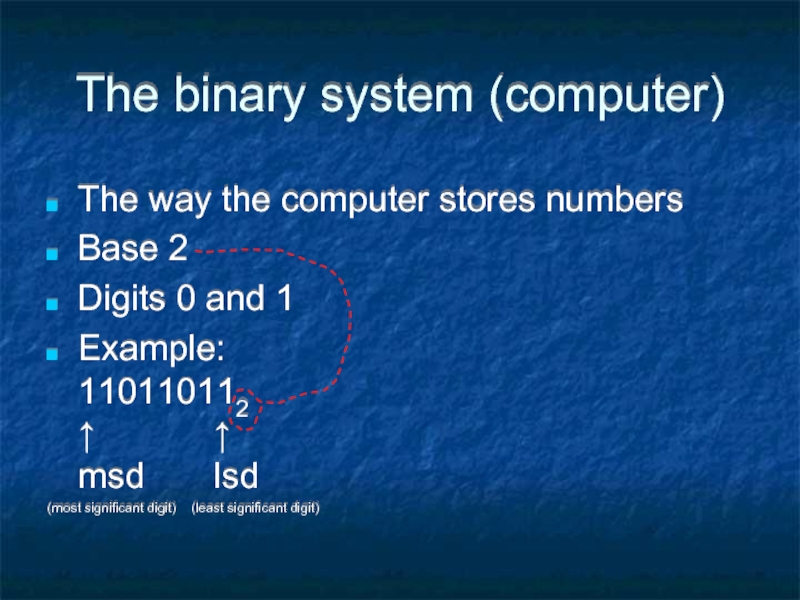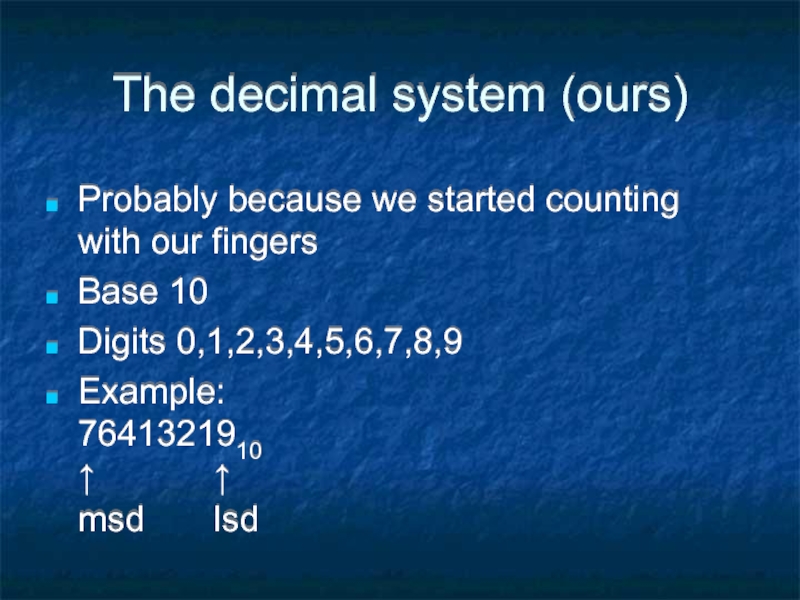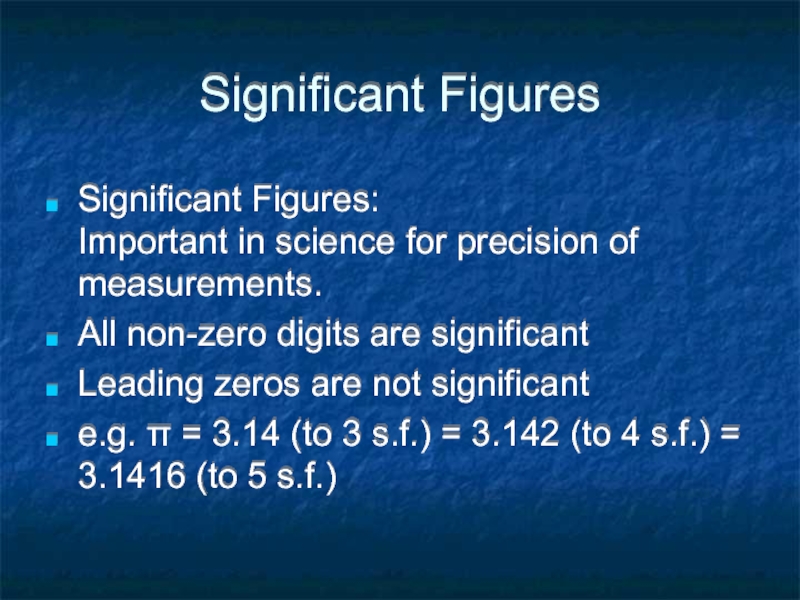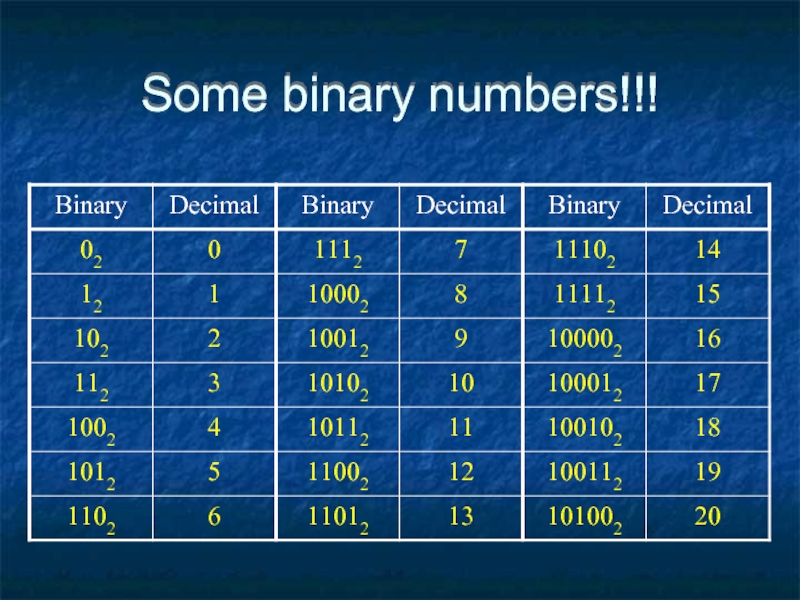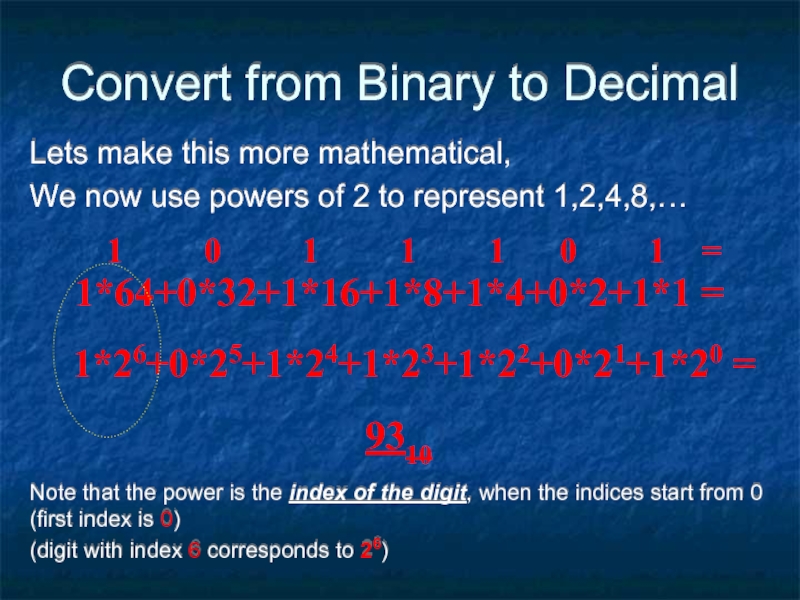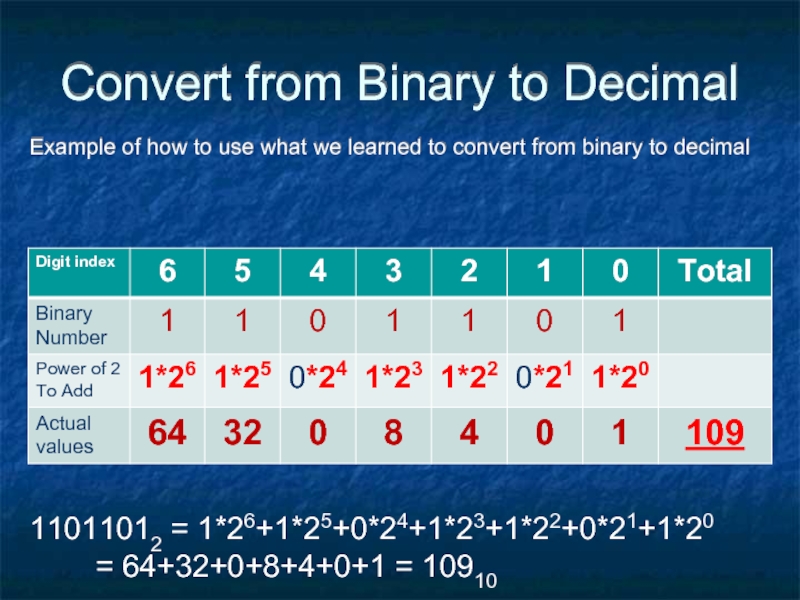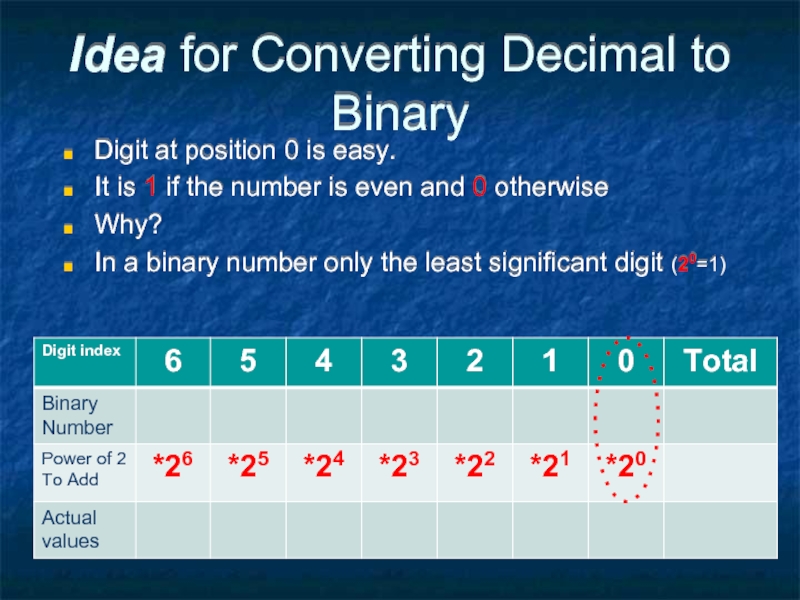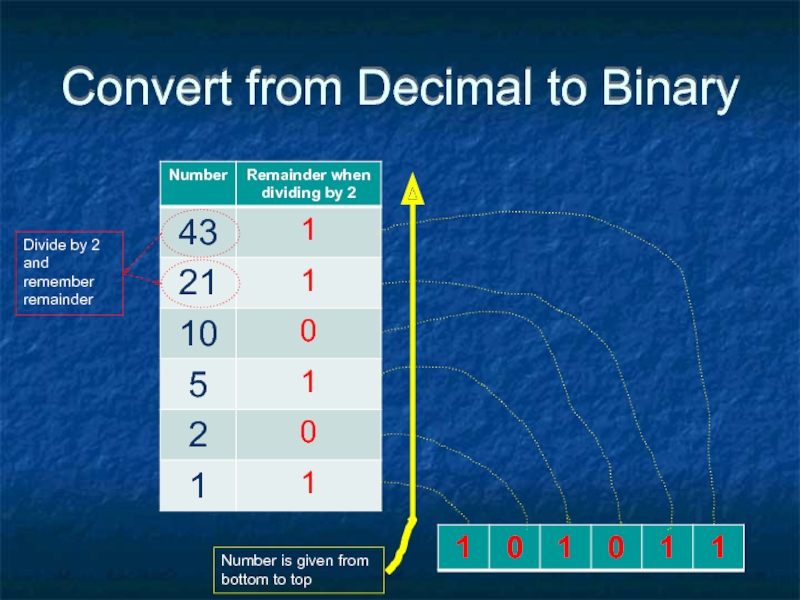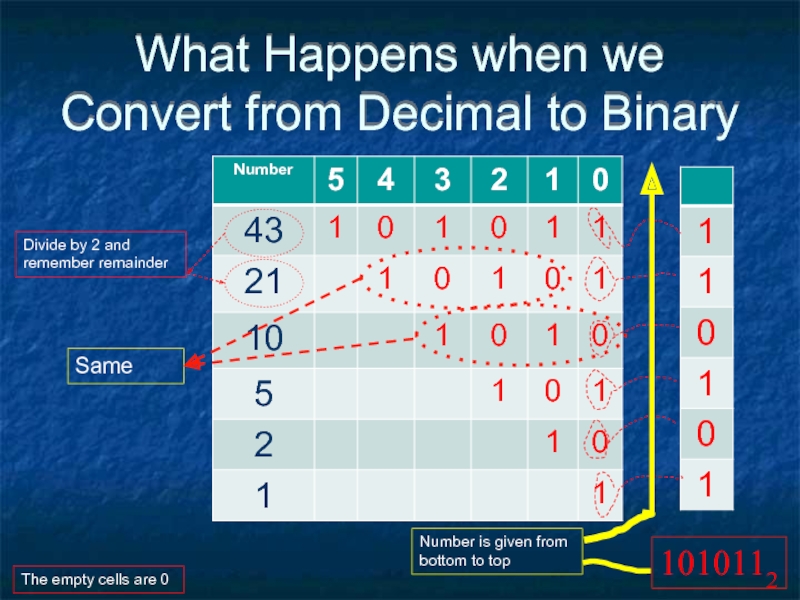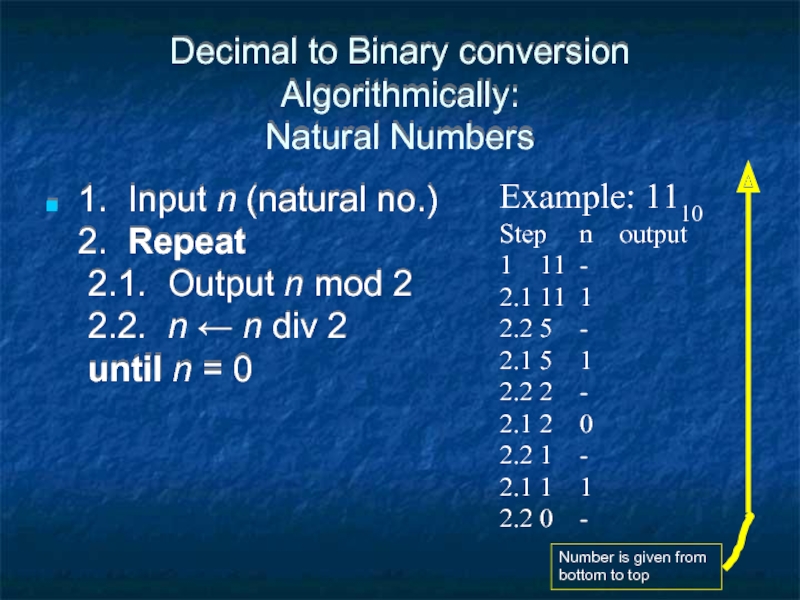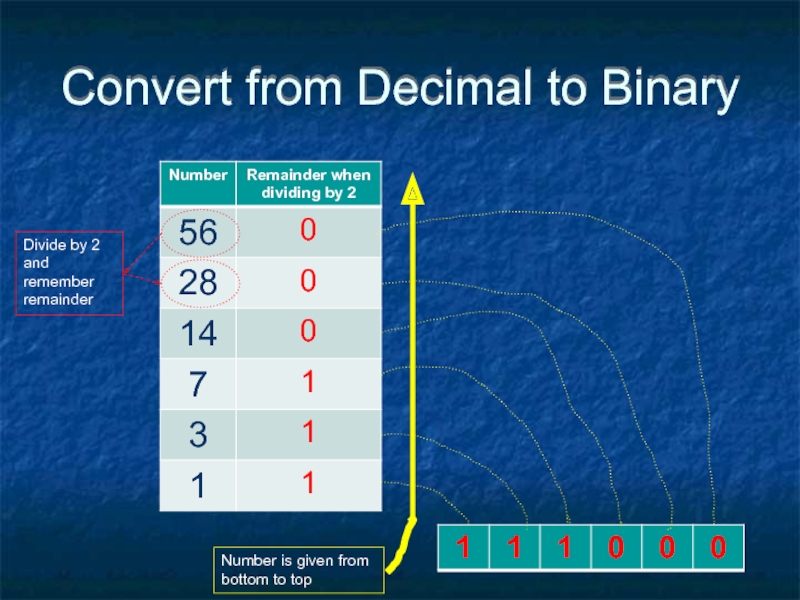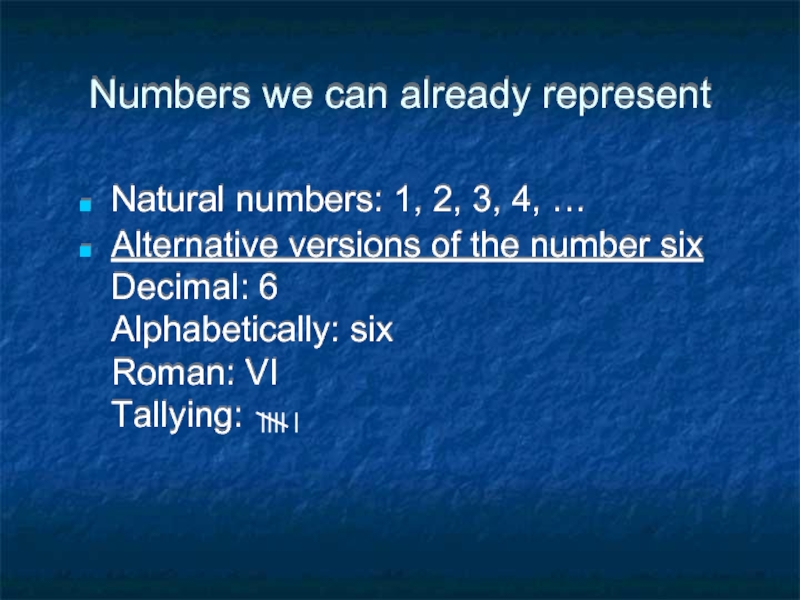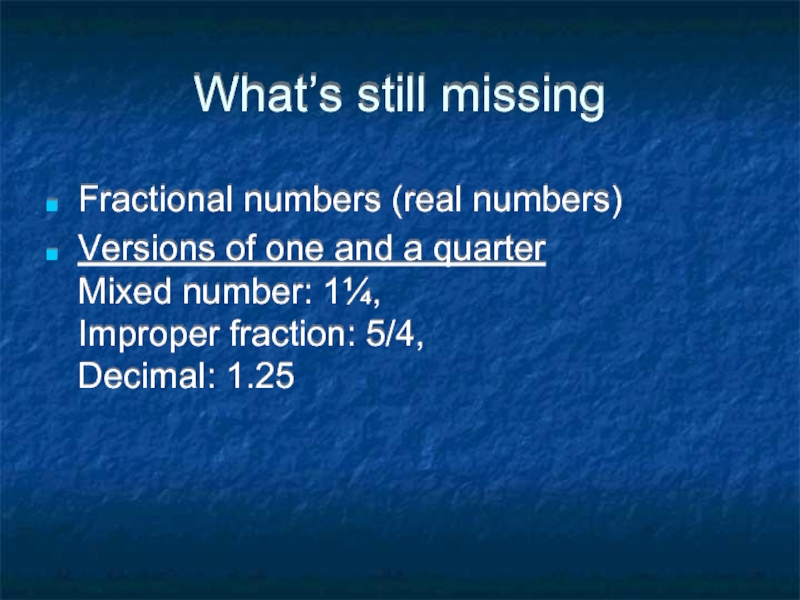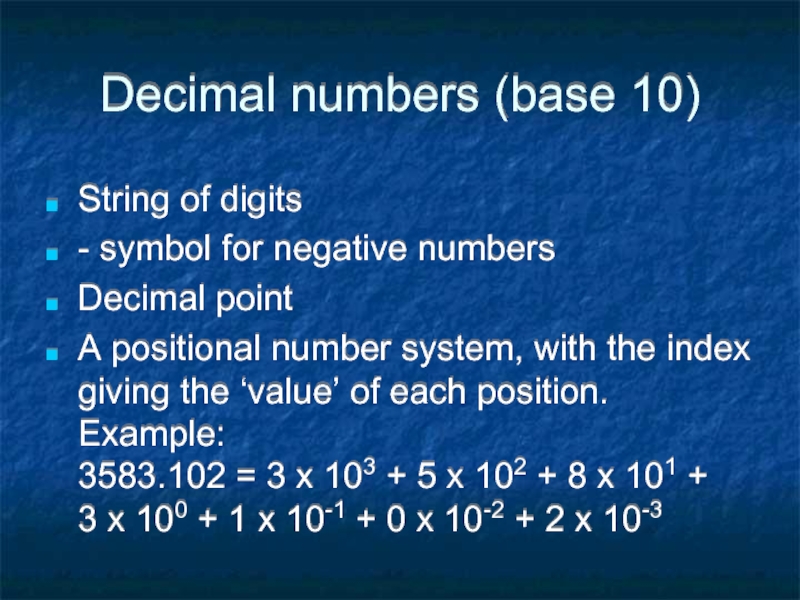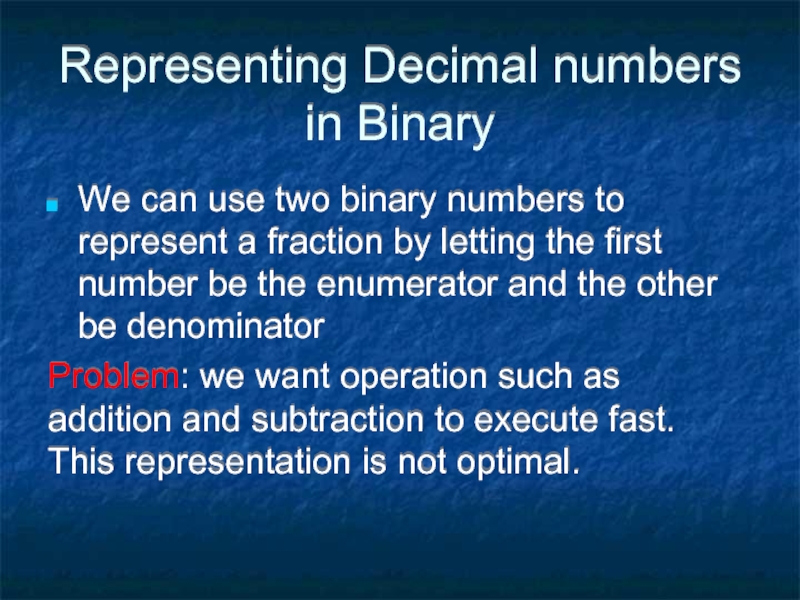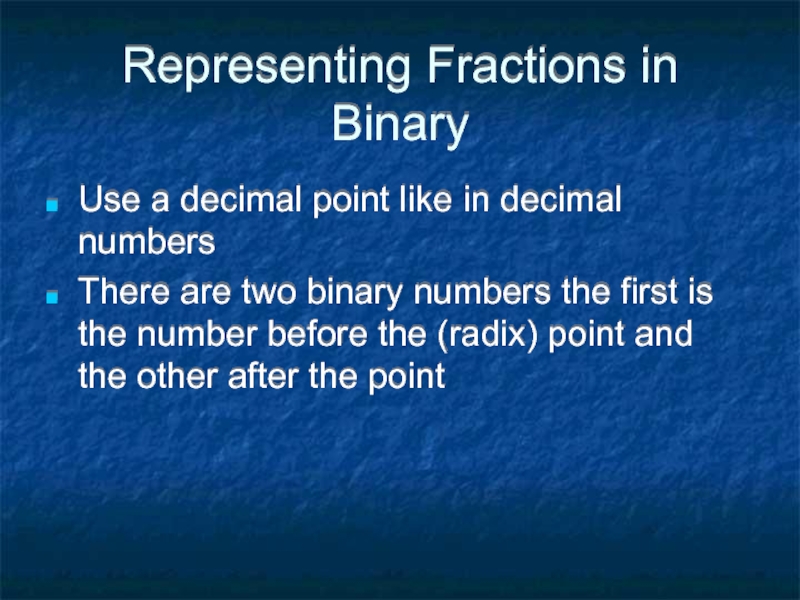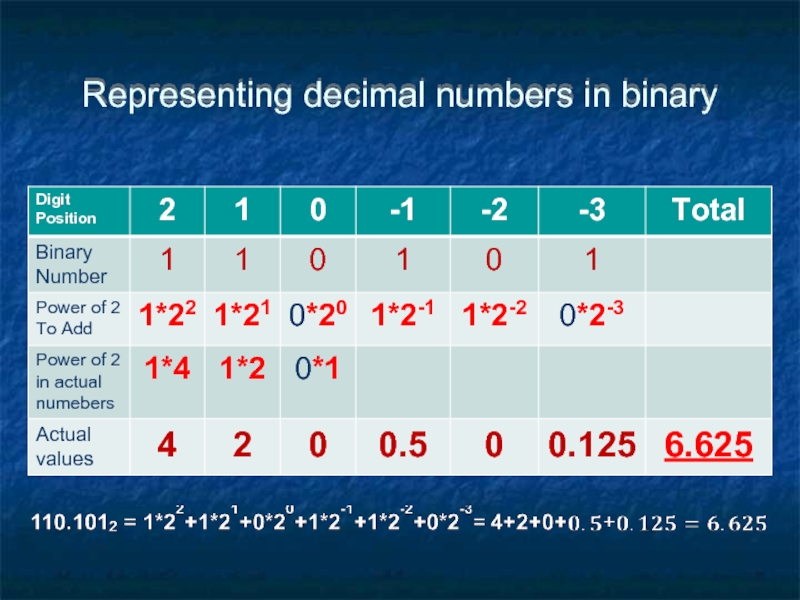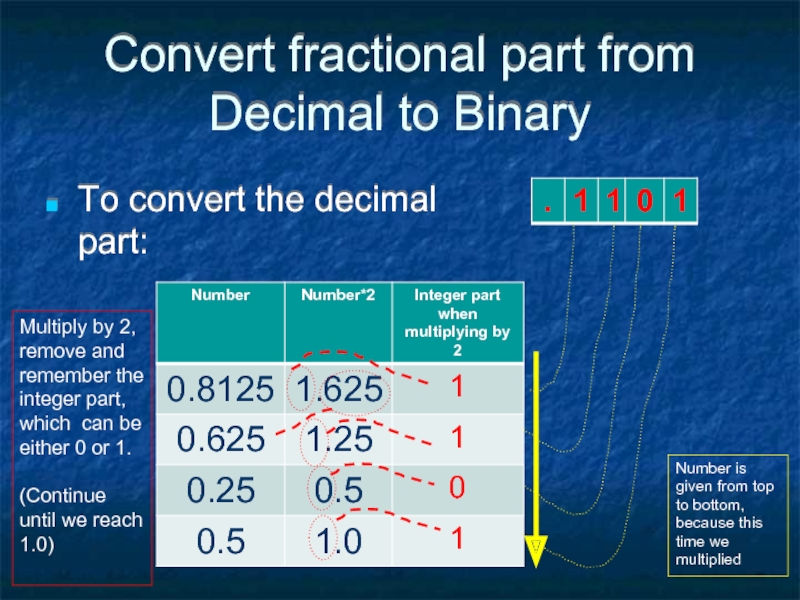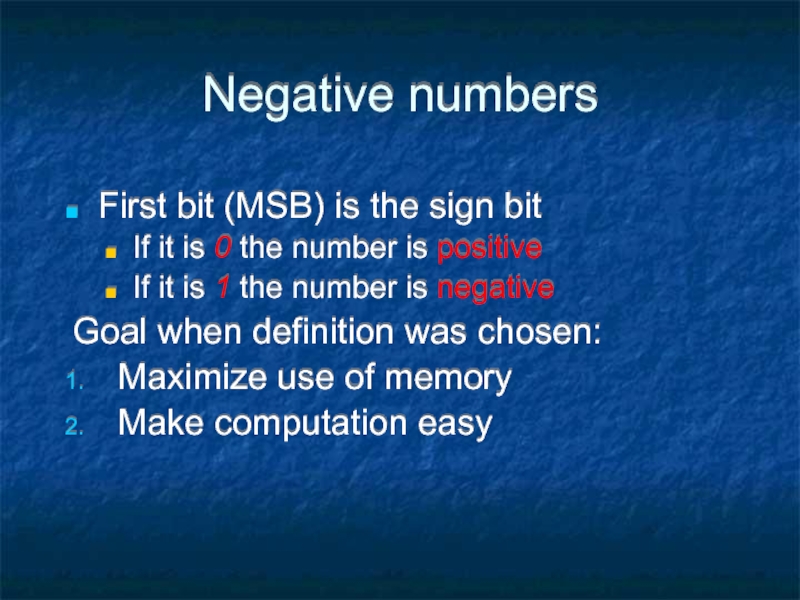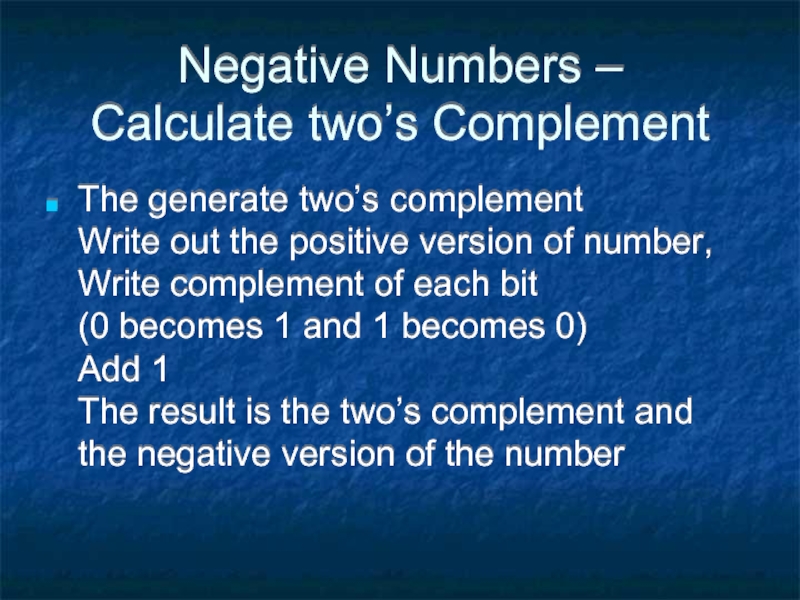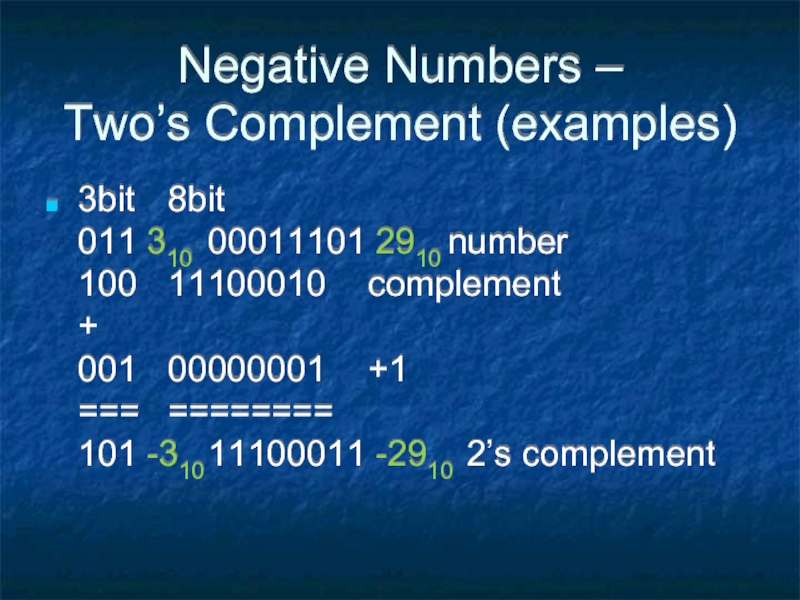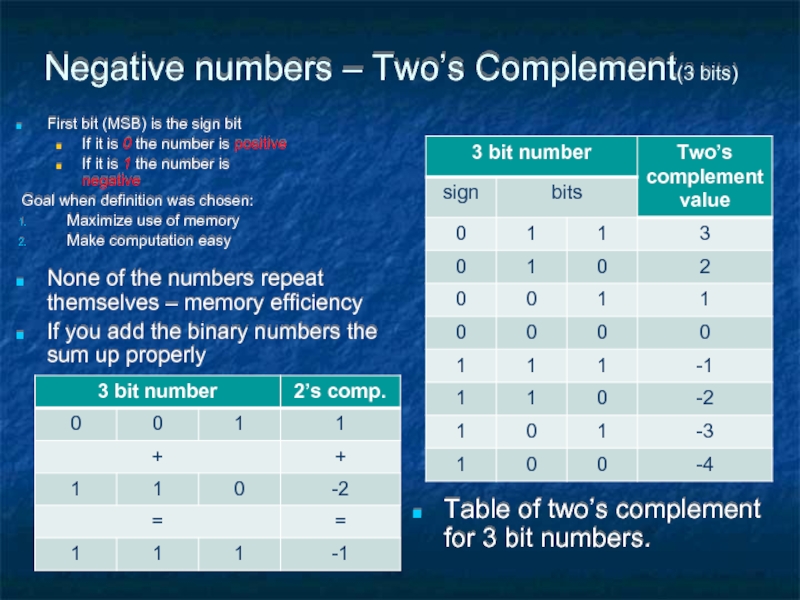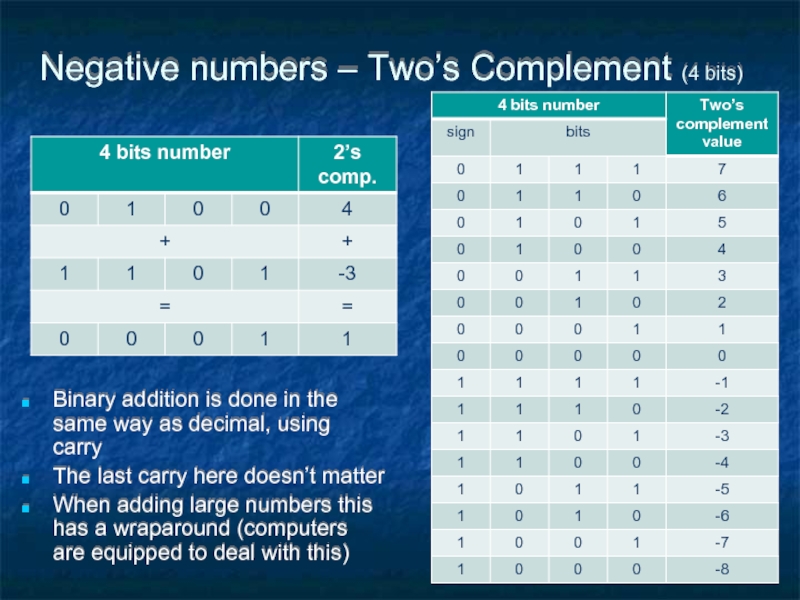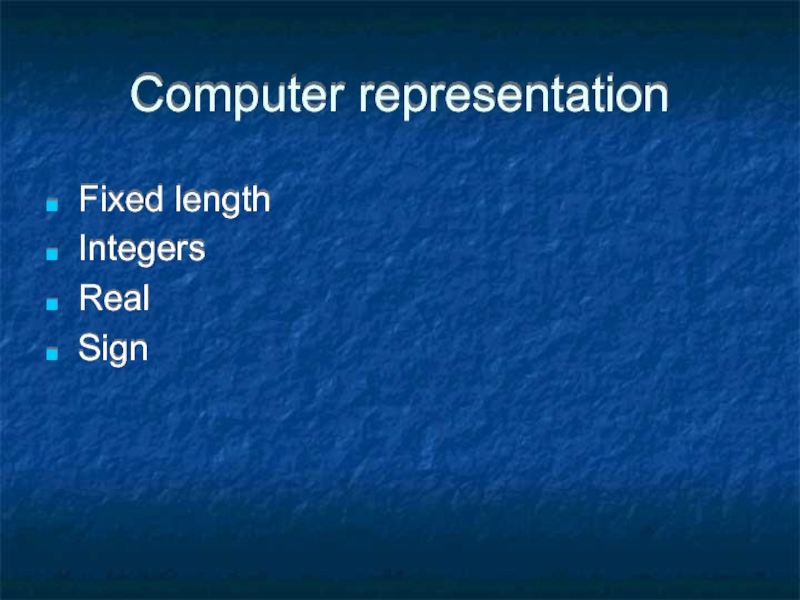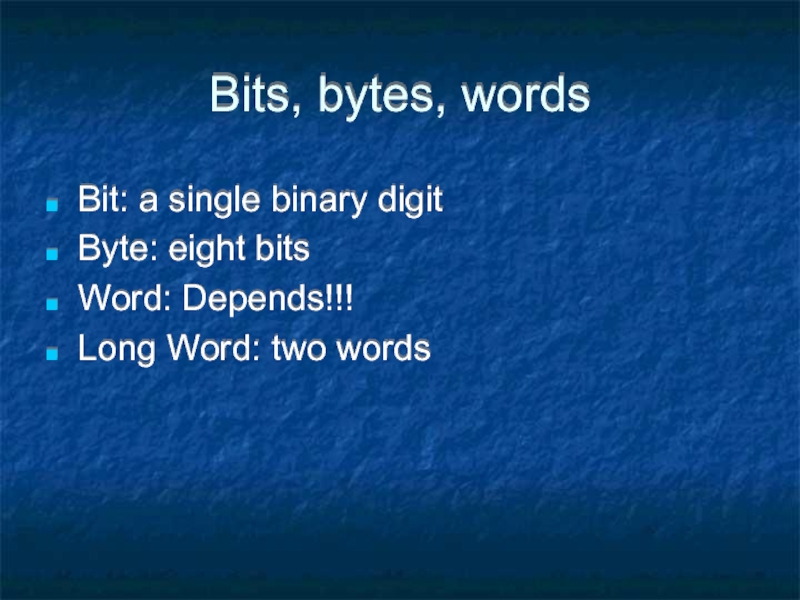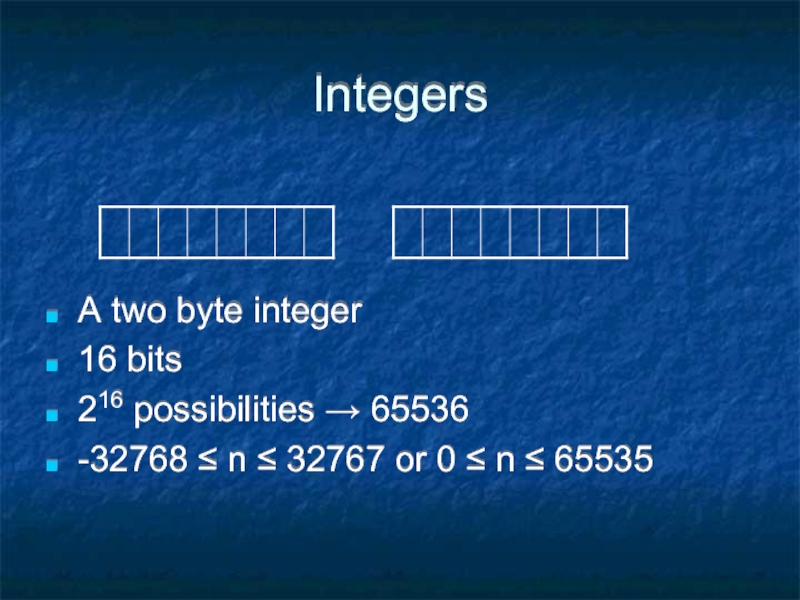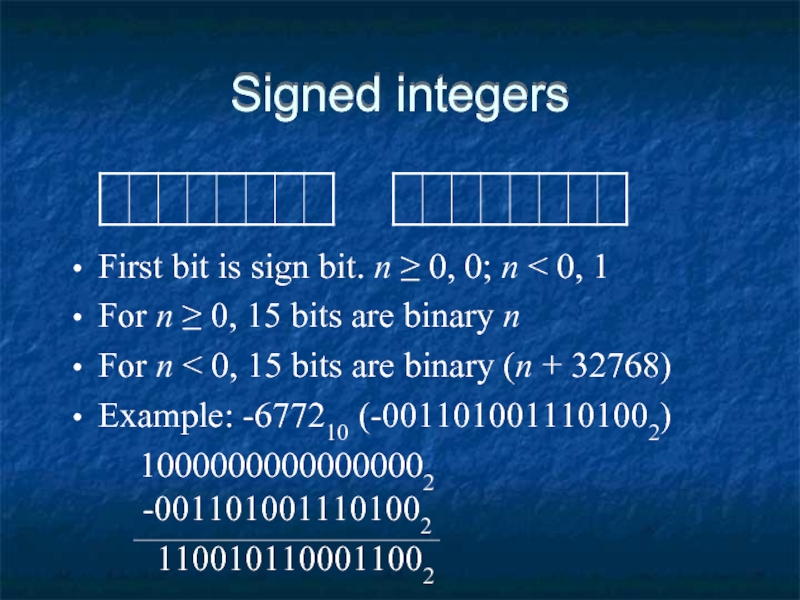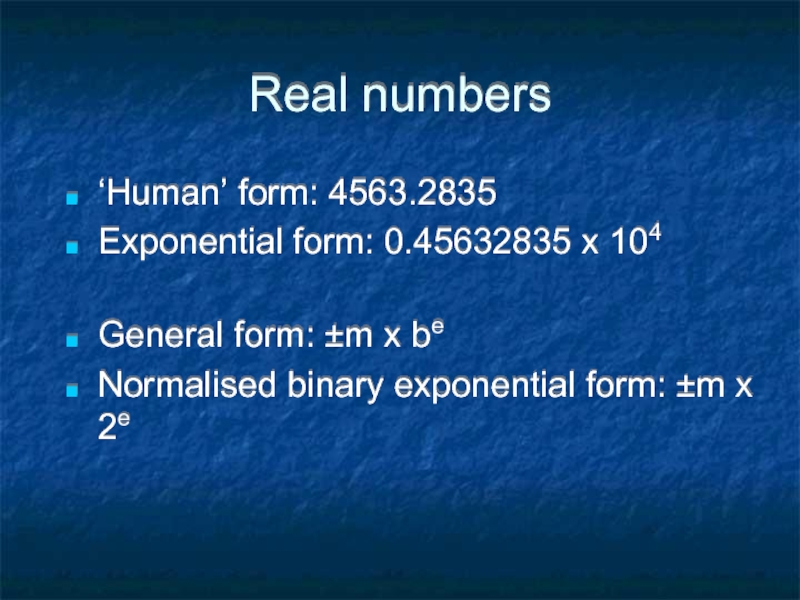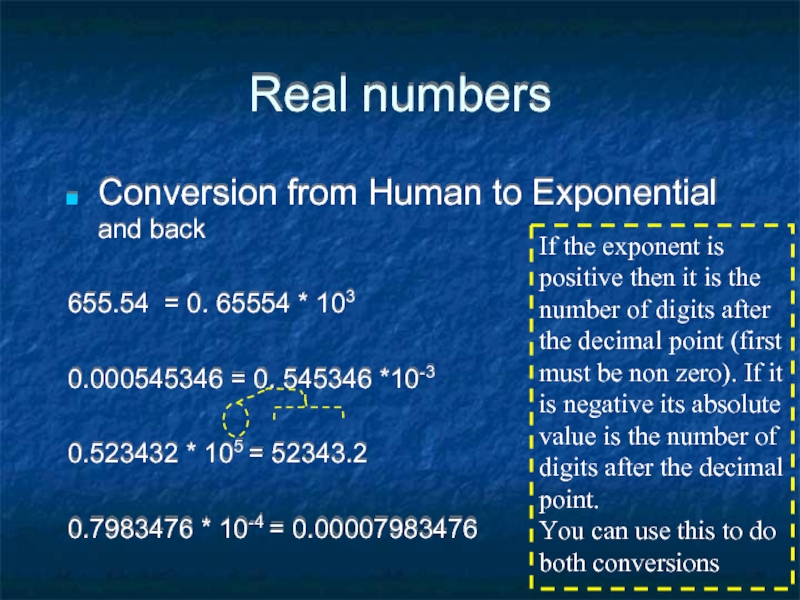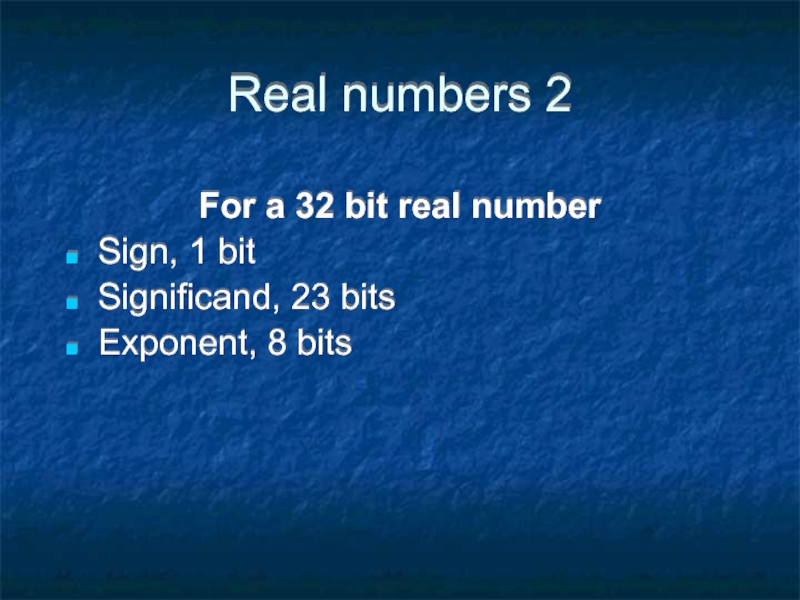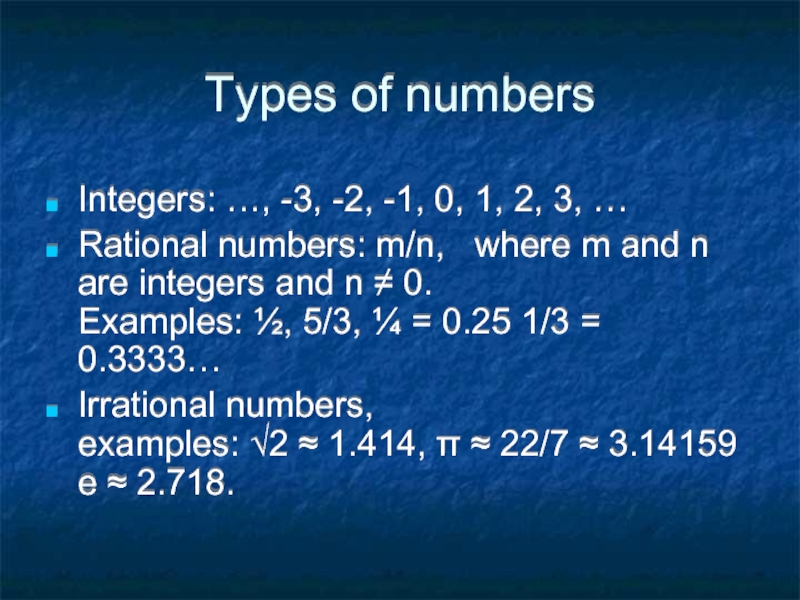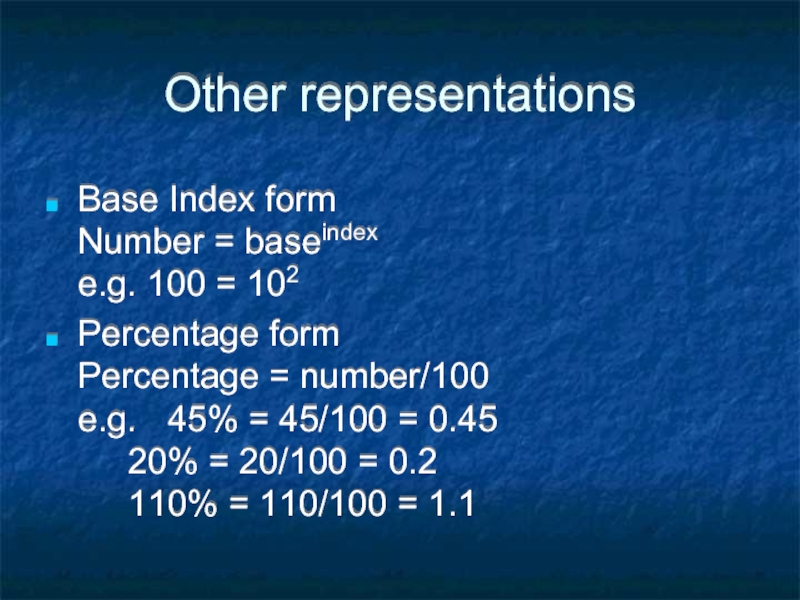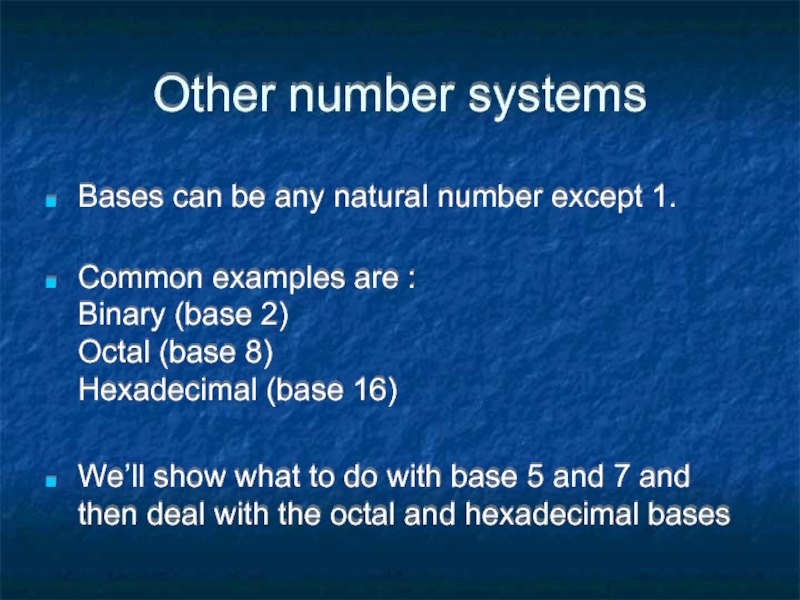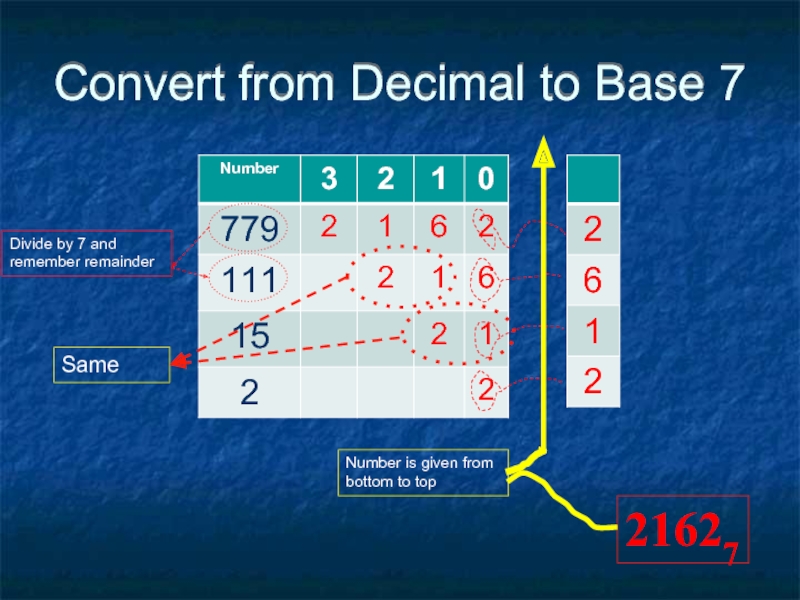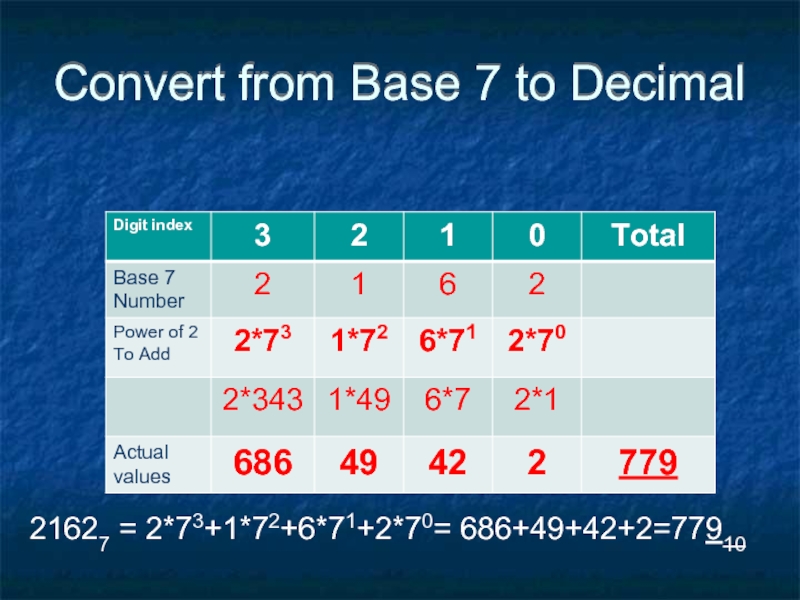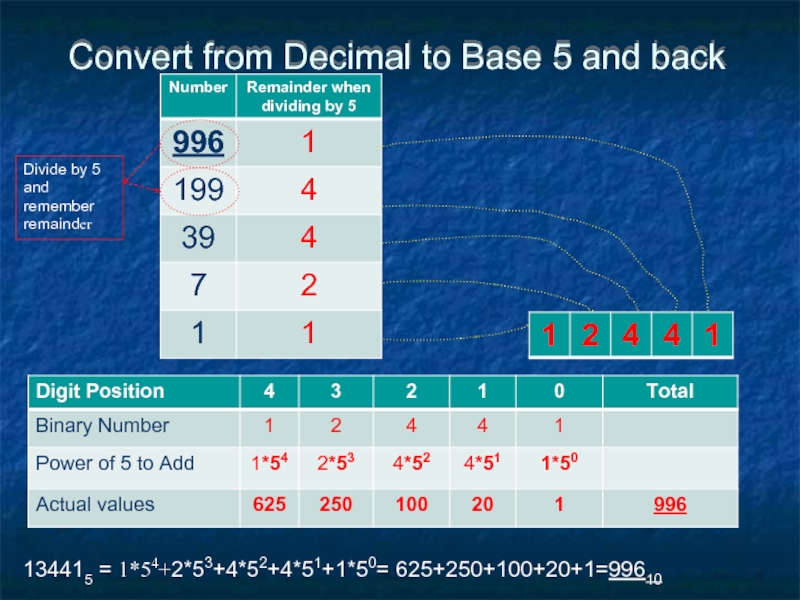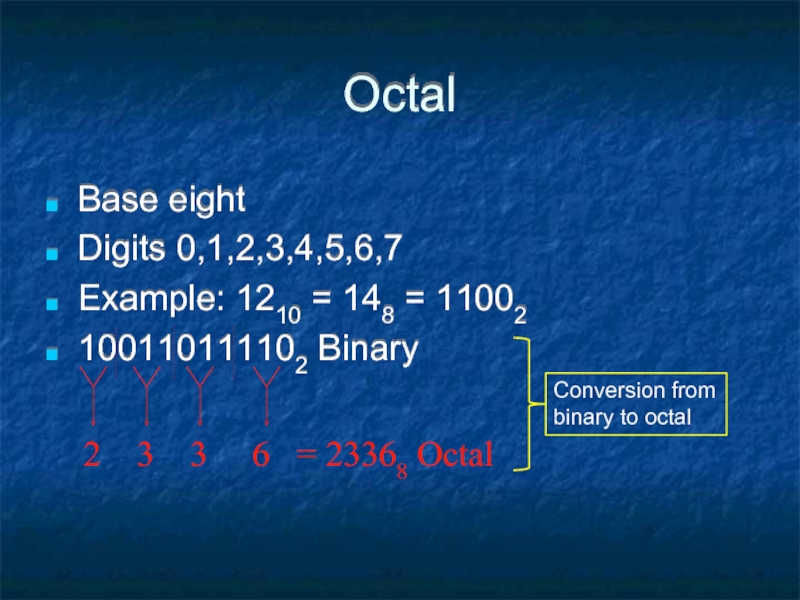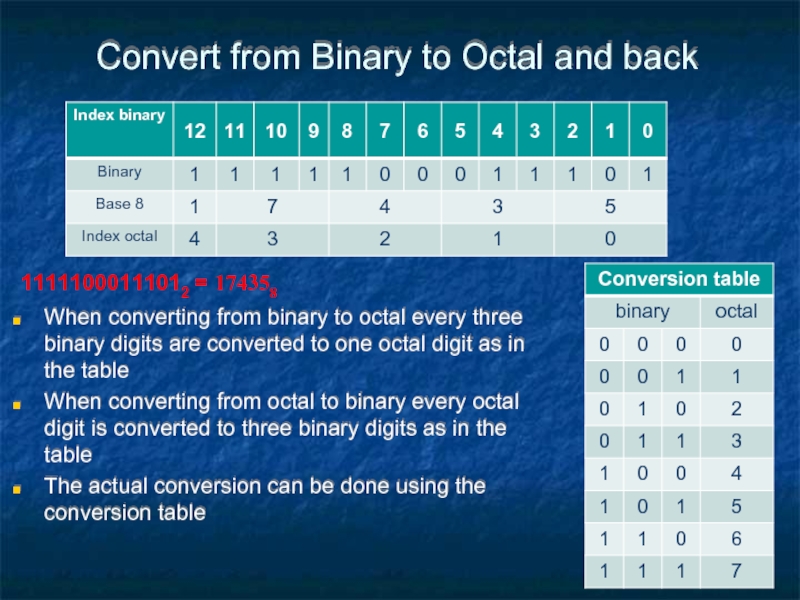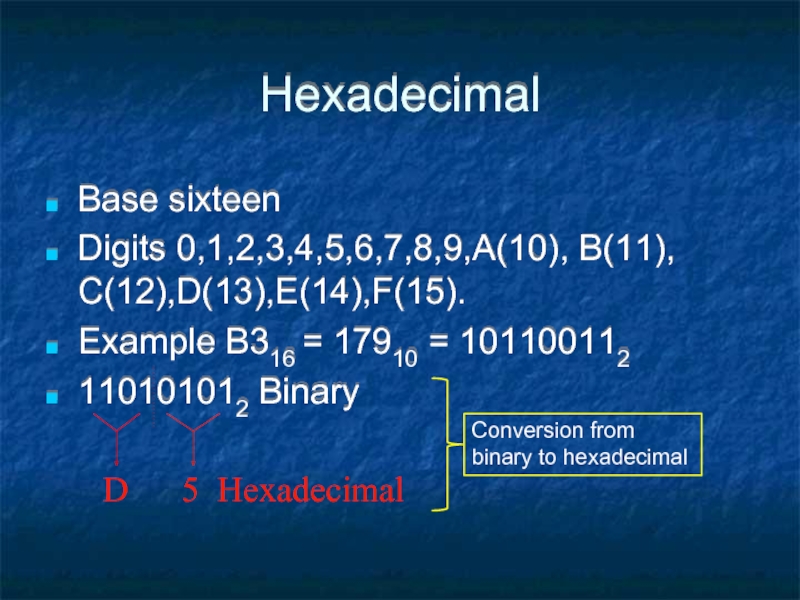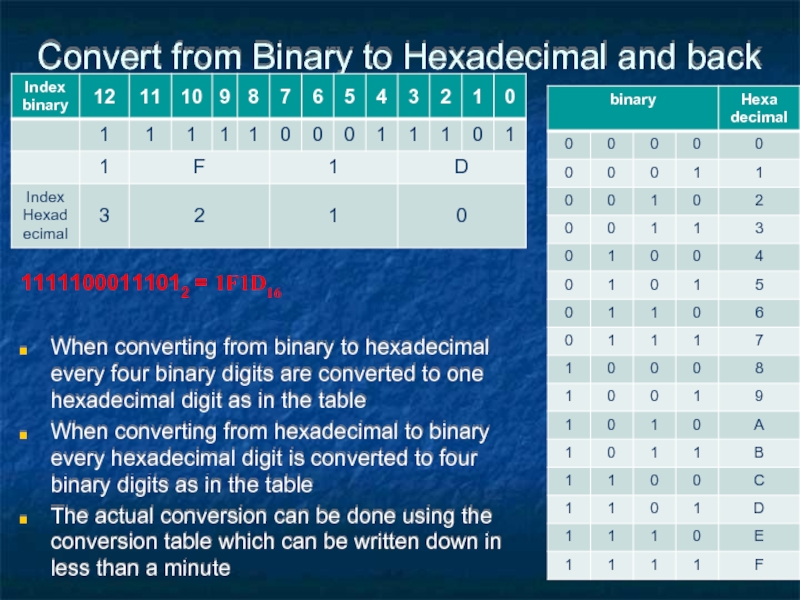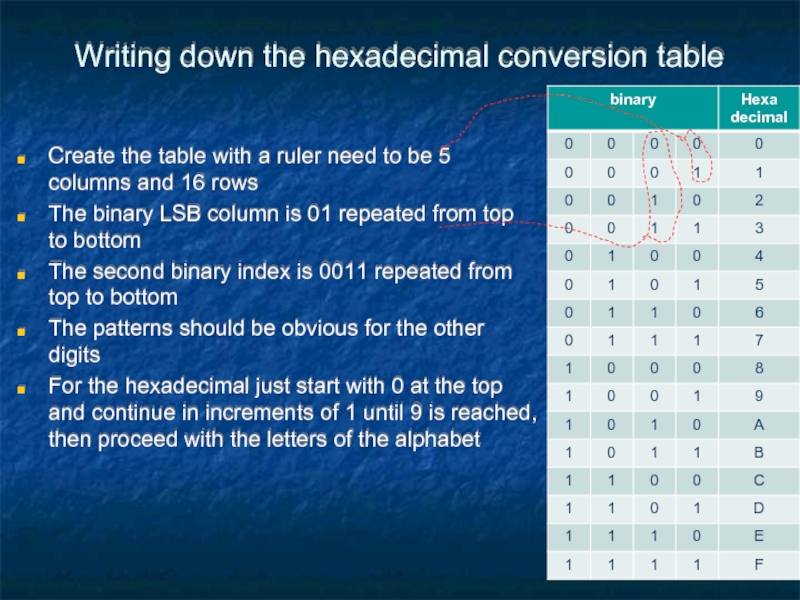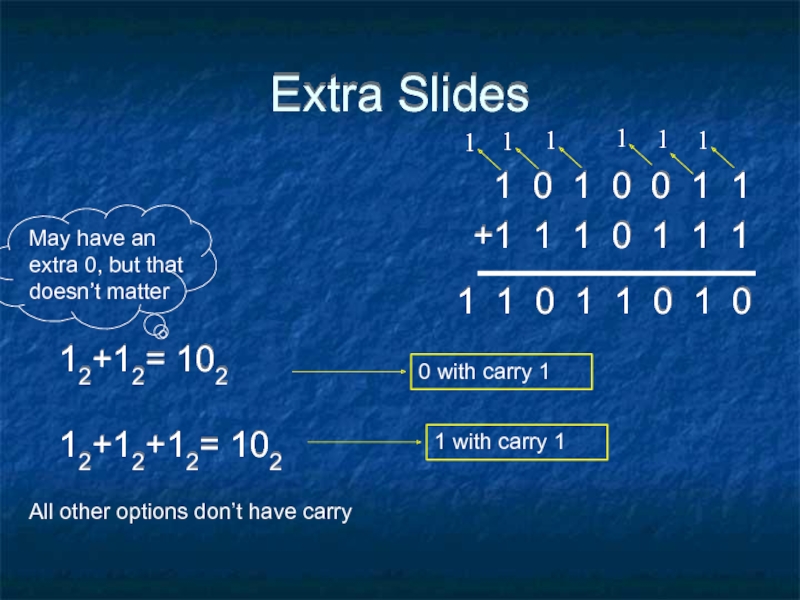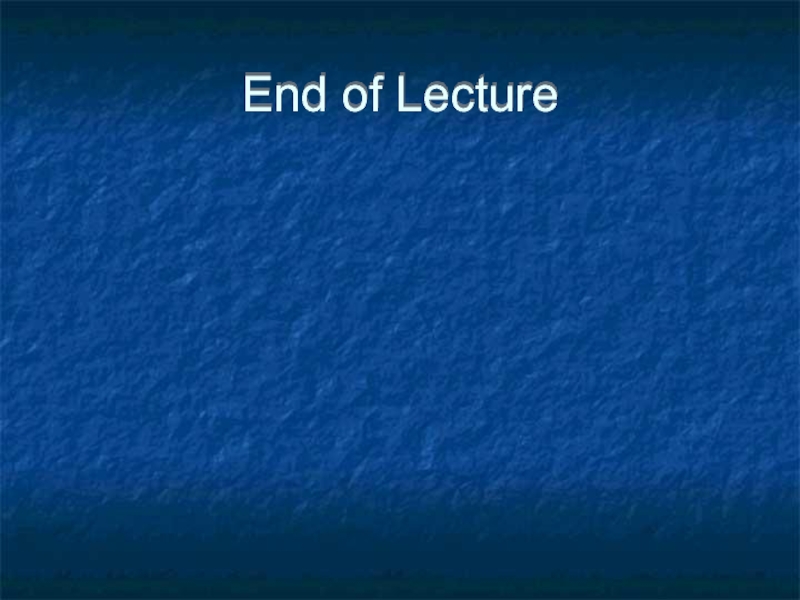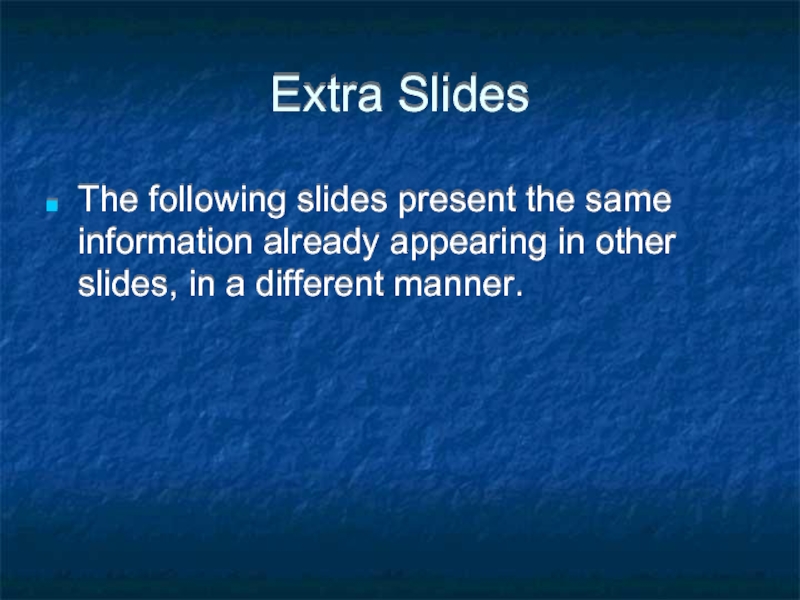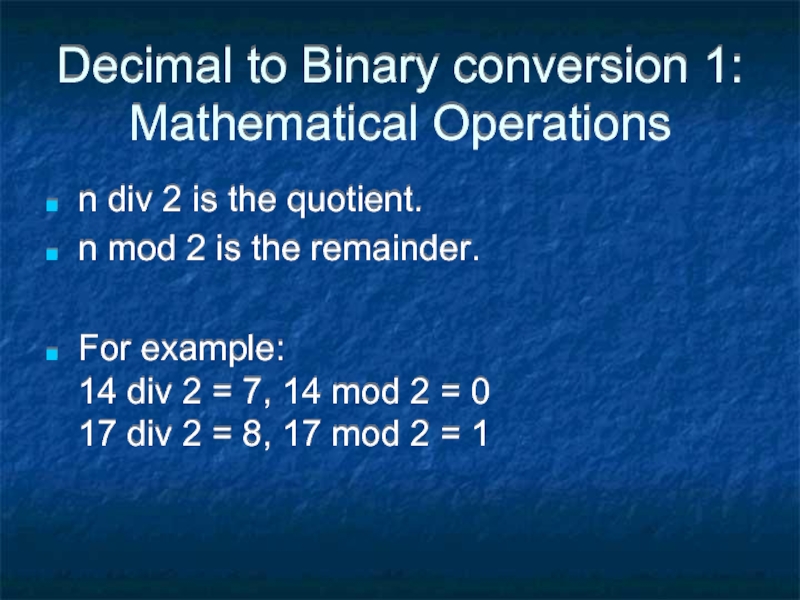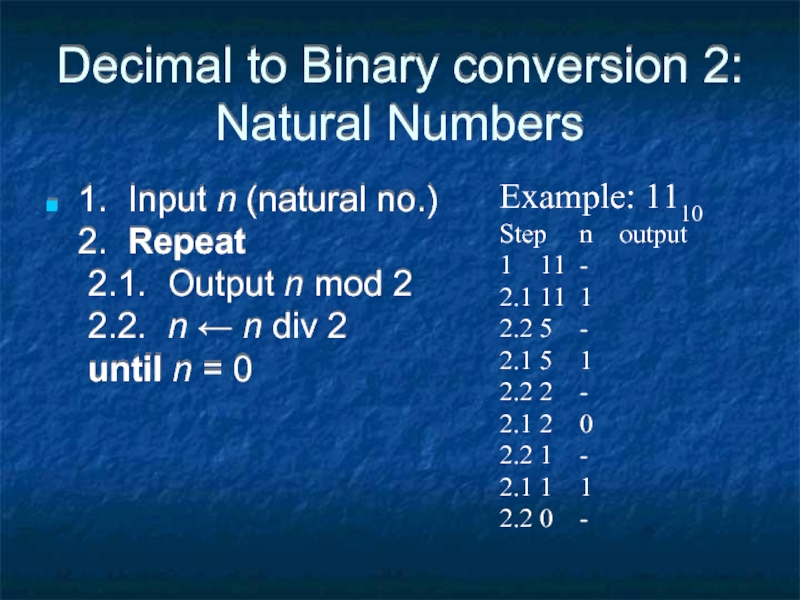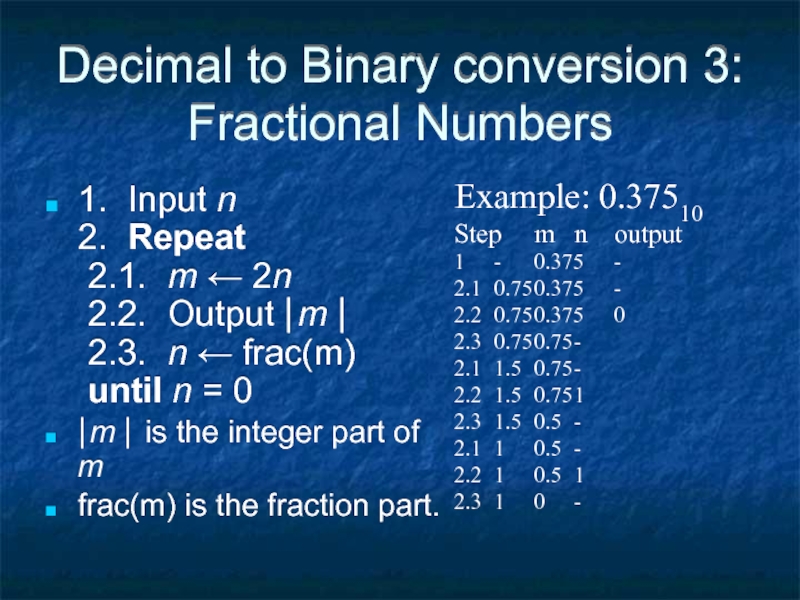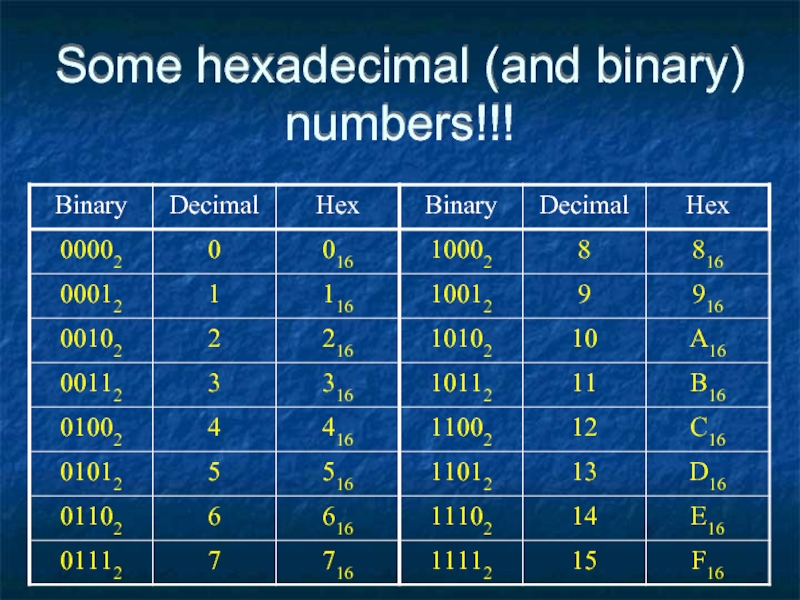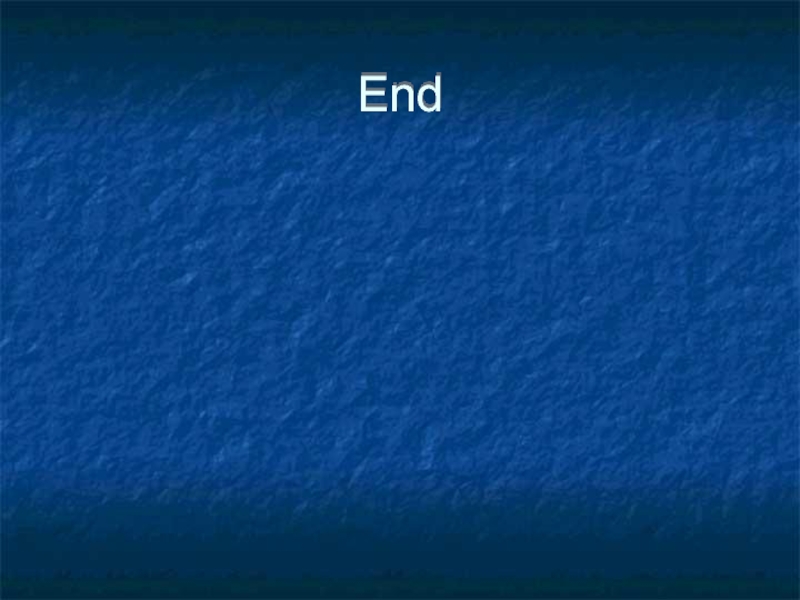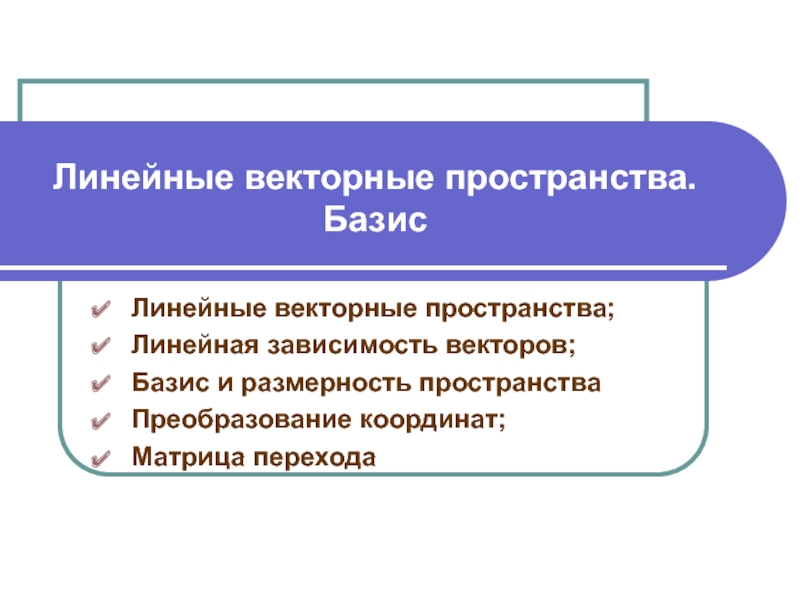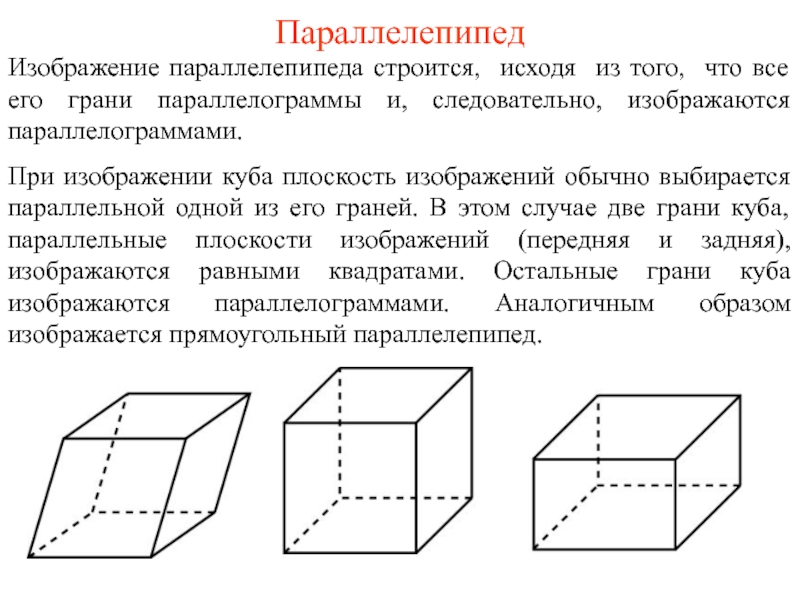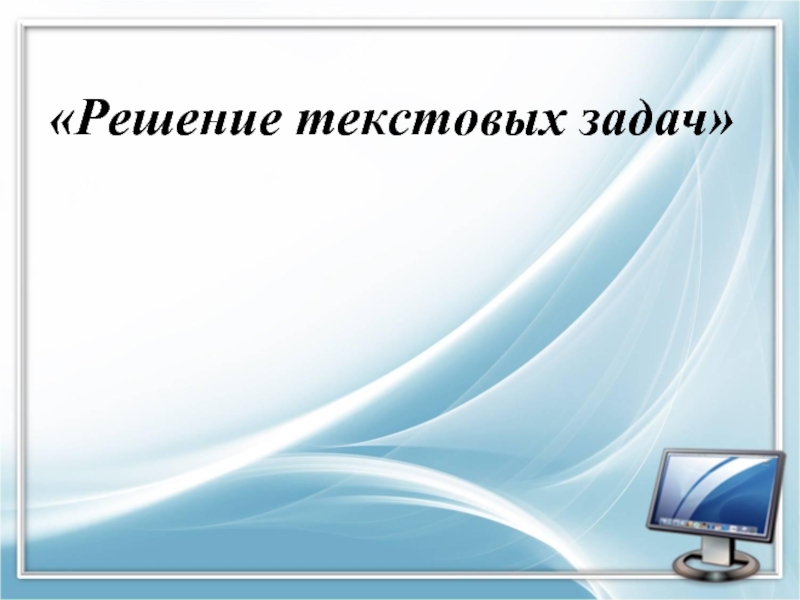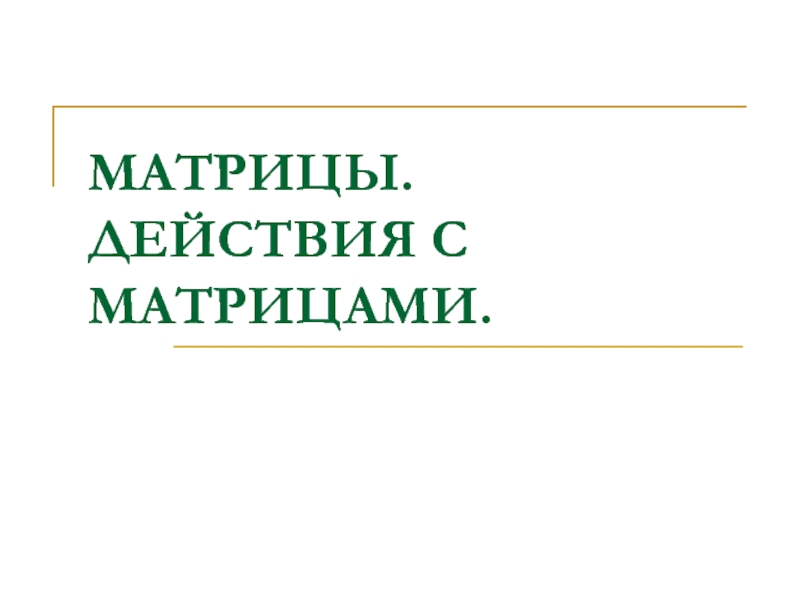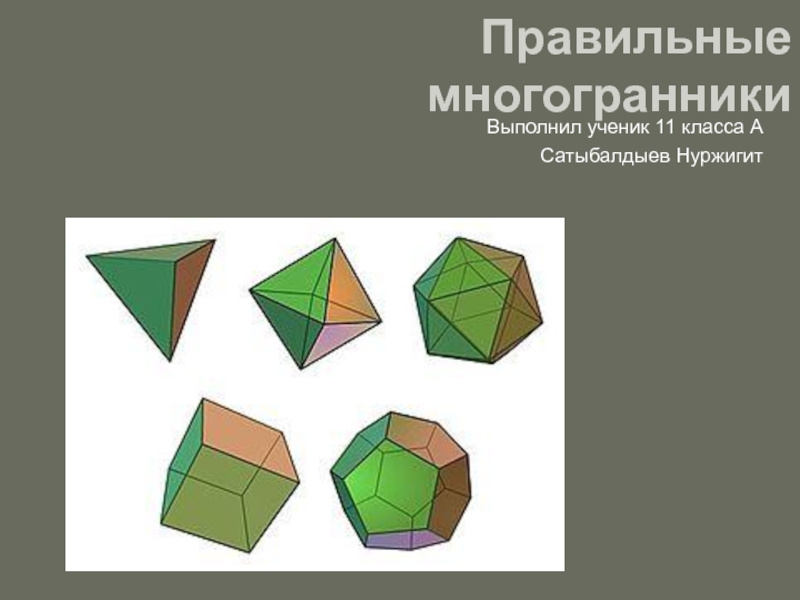- Главная
- Разное
- Дизайн
- Бизнес и предпринимательство
- Аналитика
- Образование
- Развлечения
- Красота и здоровье
- Финансы
- Государство
- Путешествия
- Спорт
- Недвижимость
- Армия
- Графика
- Культурология
- Еда и кулинария
- Лингвистика
- Английский язык
- Астрономия
- Алгебра
- Биология
- География
- Детские презентации
- Информатика
- История
- Литература
- Маркетинг
- Математика
- Медицина
- Менеджмент
- Музыка
- МХК
- Немецкий язык
- ОБЖ
- Обществознание
- Окружающий мир
- Педагогика
- Русский язык
- Технология
- Физика
- Философия
- Химия
- Шаблоны, картинки для презентаций
- Экология
- Экономика
- Юриспруденция
Mathematics for Computing 2016-2017. Lecture 1: Course Introduction and Numerical Representation презентация
Содержание
- 1. Mathematics for Computing 2016-2017. Lecture 1: Course Introduction and Numerical Representation
- 2. Topics 2016-17 Number Representation Logarithms Logic Set Theory Relations & Functions Graph Theory
- 3. Assessment In Class Test (Partway through term,
- 4. Lecture / tutorial plans Lecture every week
- 5. Provisional Timetable
- 6. Course Textbook Schaum’s Outlines Series Essential Computer Mathematics Author: Seymour Lipschutz ISBN 0-07-037990-4
- 7. Maths Support http://www.bbk.ac.uk/business/current-students/learning-co-ordinators/eva-szatmari See separate powerpoint file.
- 8. Lecture 1 Rule 1
- 9. Welcome Rule 1 We
- 10. Memory for numbers We don’t know how
- 11. Great, we know how to store 1
- 12. If we want extra numbers we add
- 13. We don’t need the cups now. Let’s
- 14. 1 0 0 0 0 1 1
- 15. Convert from Binary to Decimal When we
- 16. Convert from Binary to Decimal When we
- 17. The binary system (computer) The way the
- 18. The decimal system (ours) Probably because we
- 19. Significant Figures Significant Figures: Important in science
- 20. Some binary numbers!!!
- 21. Convert from Binary to Decimal Lets make
- 22. Convert from Binary to Decimal Example of
- 23. Idea for Converting Decimal to Binary
- 24. Convert from Decimal to Binary Divide by
- 25. What Happens when we Convert from Decimal
- 26. Decimal to Binary conversion Algorithmically: Natural Numbers
- 27. Convert from Decimal to Binary Divide by
- 28. Natural numbers: 1, 2, 3, 4, …
- 29. What’s still missing Fractional numbers (real numbers)
- 30. Decimal numbers (base 10) String of digits
- 31. Representing Decimal numbers in Binary We can
- 32. Representing Fractions in Binary Use a decimal
- 33. Representing decimal numbers in binary
- 34. Convert fractional part from Decimal to Binary
- 35. Negative numbers First bit (MSB) is the
- 36. Negative Numbers – Calculate two’s Complement
- 37. Negative Numbers – Two’s Complement (examples)
- 38. Negative numbers – Two’s Complement(3 bits) First
- 39. Negative numbers – Two’s Complement (4 bits)
- 40. Computer representation Fixed length Integers Real Sign
- 41. Bits, bytes, words Bit: a single binary
- 42. Integers A two byte integer 16 bits
- 43. Signed integers First bit is sign bit.
- 44. Real numbers ‘Human’ form: 4563.2835 Exponential form:
- 45. Real numbers Conversion from Human to Exponential
- 46. Real numbers 2 For a 32 bit
- 47. Types of numbers Integers: …, -3, -2,
- 48. Other representations Base Index form Number =
- 49. Other number systems Bases can be any
- 50. Convert from Decimal to Base 7
- 51. Convert from Base 7 to Decimal 21627 = 2*73+1*72+6*71+2*70= 686+49+42+2=77910
- 52. Convert from Decimal to Base 5 and
- 53. Octal Base eight Digits 0,1,2,3,4,5,6,7 Example: 1210
- 54. Convert from Binary to Octal and back
- 55. Hexadecimal Base sixteen Digits 0,1,2,3,4,5,6,7,8,9,A(10), B(11), C(12),D(13),E(14),F(15).
- 56. Convert from Binary to Hexadecimal and back
- 57. Writing down the hexadecimal conversion table Create
- 58. Extra Slides 1 0 1 0
- 59. End of Lecture
- 60. Extra Slides The following slides present the
- 61. Decimal to Binary conversion 1: Mathematical Operations
- 62. Decimal to Binary conversion 2: Natural Numbers
- 63. Decimal to Binary conversion 3: Fractional Numbers
- 64. Some hexadecimal (and binary) numbers!!!
- 65. End
Слайд 1Mathematics for Computing
2016-2017
Lecture 1:
Course Introduction and
Numerical Representation
Dr Andrew Purkiss
The Francis Crick
or
Dr Oded Lachish, Birkbeck,
University of London
Слайд 2Topics 2016-17
Number Representation
Logarithms
Logic
Set Theory
Relations & Functions
Graph Theory
Слайд 3Assessment
In Class Test (Partway through term, 31/10)
(20% of marks)
‘Homework’ (3
Two hour unseen examination in May/June 2017 (70% of marks)
Слайд 4Lecture / tutorial plans
Lecture every week 18:00 for 18:10 start. 1
Tutorials (problems and answers) one week in two (~1½ hours)
Compulsory In-Class Test, October 31st
Lecture Notes etc. will appear on Moodle
Class split in two rooms
Слайд 6Course Textbook
Schaum’s Outlines Series
Essential Computer Mathematics
Author: Seymour Lipschutz
ISBN 0-07-037990-4
Слайд 7Maths Support
http://www.bbk.ac.uk/business/current-students/learning-co-ordinators/eva-szatmari
See separate powerpoint file.
Слайд 9Welcome
Rule 1
We want to get the computer to do NEW complicated
We start by learning the basics of its language, Numerical Representation, Logic …
Слайд 10Memory for numbers
We don’t know how our memory stores numbers
We
Full glass is 1, empty is 0
1
0
Слайд 11Great, we know how to store 1 and 0 in the
How do we store 0,1,2,3?
We use two cups!
1
0
0
0
0
1
1
1
0
1
2
3
The numbers in the way we are used to see them. Base 10 (decimal).
The numbers in the way the computer sees them. Base 2 (binary).
Слайд 12If we want extra numbers we add an extra cup!
Each cup
1
0
0
0
0
1
1
1
0
1
2
3
1
0
0
0
0
1
1
1
4
5
6
7
0
0
0
0
1
1
1
1
Слайд 13We don’t need the cups now.
Let’s understand how this works
We shall
1
0
0
0
0
1
1
1
0
1
2
3
Same
1
0
0
0
0
2
1
2
The repetitive pattern here tells us whether the number is odd or even (add 0 or 1)
Слайд 141
0
0
0
0
1
1
1
0
1
2
3
0
0
0
0
Same
1
0
0
0
0
2
1
2
1
0
0
0
0
1
1
1
4
5
6
7
1
1
1
1
1
0
0
0
0
2
1
2
0
0
0
0
4
4
4
4
The repetitive pattern here tells us whether to add 0 or
Слайд 15Convert from Binary to Decimal
When we translate from the binary base
The first binary digit tells us whether to add 1
The second binary digit tells us whether to add 2
The third binary digit tells us whether to add 4
The fourth binary digit tells us whether to add ??
Слайд 16Convert from Binary to Decimal
When we translate from the binary base
The first binary digit tells us whether to add 1
Every digit afterwards tells us whether to add exactly two times as much a the previous digit
Lets try this out
1 0 1 1 1 0 1 =
1*64+0*32+1*16+1*8+1*4+0*2+1*1 = 83
Слайд 17The binary system (computer)
The way the computer stores numbers
Base 2
Digits 0
Example: 110110112 ↑ ↑ msd lsd
(most significant digit) (least significant digit)
Слайд 18The decimal system (ours)
Probably because we started counting with our fingers
Base
Digits 0,1,2,3,4,5,6,7,8,9
Example: 7641321910 ↑ ↑ msd lsd
Слайд 19Significant Figures
Significant Figures:
Important in science for precision of measurements.
All non-zero digits
Leading zeros are not significant
e.g. π = 3.14 (to 3 s.f.) = 3.142 (to 4 s.f.) = 3.1416 (to 5 s.f.)
Слайд 21Convert from Binary to Decimal
Lets make this more mathematical,
We now
Note that the power is the index of the digit, when the indices start from 0 (first index is 0)
(digit with index 6 corresponds to 26)
1 0 1 1 1 0 1 =
1*64+0*32+1*16+1*8+1*4+0*2+1*1 =
1*26+0*25+1*24+1*23+1*22+0*21+1*20 =
9310
Слайд 22Convert from Binary to Decimal
Example of how to use what we
11011012 = 1*26+1*25+0*24+1*23+1*22+0*21+1*20
= 64+32+0+8+4+0+1 = 10910
Слайд 23Idea for Converting Decimal to Binary
Digit at position 0 is
It is 1 if the number is even and 0 otherwise
Why?
In a binary number only the least significant digit (20=1)
Слайд 24Convert from Decimal to Binary
Divide by 2 and remember remainder
Number is
Слайд 25What Happens when we Convert from Decimal to Binary
Divide by 2
Same
Number is given from bottom to top
1010112
The empty cells are 0
Слайд 26Decimal to Binary conversion Algorithmically:
Natural Numbers
1. Input n (natural no.)
2. Repeat
Example: 1110
Step n output
1 11 -
2.1 11 1
2.2 5 -
2.1 5 1
2.2 2 -
2.1 2 0
2.2 1 -
2.1 1 1
2.2 0 -
Number is given from bottom to top
Слайд 27Convert from Decimal to Binary
Divide by 2 and remember remainder
Number is
Слайд 28Natural numbers: 1, 2, 3, 4, …
Alternative versions of the number
Numbers we can already represent
Слайд 29What’s still missing
Fractional numbers (real numbers)
Versions of one and a quarter
Слайд 30Decimal numbers (base 10)
String of digits
- symbol for negative numbers
Decimal point
A
Слайд 31Representing Decimal numbers in Binary
We can use two binary numbers to
Problem: we want operation such as addition and subtraction to execute fast. This representation is not optimal.
Слайд 32Representing Fractions in Binary
Use a decimal point like in decimal numbers
There
Слайд 34Convert fractional part from Decimal to Binary
Multiply by 2, remove and
(Continue until we reach 1.0)
Number is given from top to bottom, because this time we multiplied
To convert the decimal part:
Слайд 35Negative numbers
First bit (MSB) is the sign bit
If it is 0
If it is 1 the number is negative
Goal when definition was chosen:
Maximize use of memory
Make computation easy
Слайд 36Negative Numbers –
Calculate two’s Complement
The generate two’s complement
Write out the
Слайд 37Negative Numbers –
Two’s Complement (examples)
3bit 8bit
011 310 00011101 2910 number
100 11100010 complement
+
001 00000001 +1
=== ========
101 -310 11100011
Слайд 38Negative numbers – Two’s Complement(3 bits)
First bit (MSB) is the sign
If it is 0 the number is positive
If it is 1 the number is negative
Goal when definition was chosen:
Maximize use of memory
Make computation easy
None of the numbers repeat themselves – memory efficiency
If you add the binary numbers the sum up properly
Table of two’s complement for 3 bit numbers.
Слайд 39Negative numbers – Two’s Complement (4 bits)
Binary addition is done in
The last carry here doesn’t matter
When adding large numbers this has a wraparound (computers are equipped to deal with this)
Слайд 41Bits, bytes, words
Bit: a single binary digit
Byte: eight bits
Word: Depends!!!
Long Word:
Слайд 42Integers
A two byte integer
16 bits
216 possibilities → 65536
-32768 ≤ n ≤
Слайд 43Signed integers
First bit is sign bit. n ≥ 0, 0; n
For n ≥ 0, 15 bits are binary n
For n < 0, 15 bits are binary (n + 32768)
Example: -677210 (-0011010011101002)
10000000000000002 -0011010011101002
1100101100011002
Слайд 44Real numbers
‘Human’ form: 4563.2835
Exponential form: 0.45632835 x 104
General form: ±m
Normalised binary exponential form: ±m x 2e
Слайд 45Real numbers
Conversion from Human to Exponential and back
655.54 = 0. 65554
0.000545346 = 0. 545346 *10-3
0.523432 * 105 = 52343.2
0.7983476 * 10-4 = 0.00007983476
If the exponent is positive then it is the number of digits after the decimal point (first must be non zero). If it is negative its absolute value is the number of digits after the decimal point.
You can use this to do both conversions
Слайд 47Types of numbers
Integers: …, -3, -2, -1, 0, 1, 2, 3,
Rational numbers: m/n, where m and n are integers and n ≠ 0. Examples: ½, 5/3, ¼ = 0.25 1/3 = 0.3333…
Irrational numbers, examples: √2 ≈ 1.414, π ≈ 22/7 ≈ 3.14159 e ≈ 2.718.
Слайд 48Other representations
Base Index form
Number = baseindex
e.g. 100 = 102
Percentage form
Percentage =
Слайд 49Other number systems
Bases can be any natural number except 1.
Common examples
We’ll show what to do with base 5 and 7 and then deal with the octal and hexadecimal bases
Слайд 50Convert from Decimal to Base 7
Divide by 7 and remember remainder
Same
Number
21627
Слайд 52Convert from Decimal to Base 5 and back
Divide by 5 and
134415 = 1*54+2*53+4*52+4*51+1*50= 625+250+100+20+1=99610
Слайд 53Octal
Base eight
Digits 0,1,2,3,4,5,6,7
Example: 1210 = 148 = 11002
100110111102 Binary
2
Conversion from binary to octal
Слайд 54Convert from Binary to Octal and back
When converting from binary to
When converting from octal to binary every octal digit is converted to three binary digits as in the table
The actual conversion can be done using the conversion table
11111000111012 = 174358
Слайд 55Hexadecimal
Base sixteen
Digits 0,1,2,3,4,5,6,7,8,9,A(10), B(11), C(12),D(13),E(14),F(15).
Example B316 = 17910 = 101100112
110101012 Binary
D
Conversion from binary to hexadecimal
Слайд 56Convert from Binary to Hexadecimal and back
When converting from binary to
When converting from hexadecimal to binary every hexadecimal digit is converted to four binary digits as in the table
The actual conversion can be done using the conversion table which can be written down in less than a minute
11111000111012 = 1F1D16
Слайд 57Writing down the hexadecimal conversion table
Create the table with a ruler
The binary LSB column is 01 repeated from top to bottom
The second binary index is 0011 repeated from top to bottom
The patterns should be obvious for the other digits
For the hexadecimal just start with 0 at the top and continue in increments of 1 until 9 is reached, then proceed with the letters of the alphabet
Слайд 58
Extra Slides
1 0 1 0 0 1 1
+1 1 1 0
1 1 0 1 1 0 1 0
1
1
1
1
1
1
12+12= 102
12+12+12= 102
0 with carry 1
1 with carry 1
May have an extra 0, but that doesn’t matter
All other options don’t have carry
Слайд 60Extra Slides
The following slides present the same information already appearing in
Слайд 61Decimal to Binary conversion 1:
Mathematical Operations
n div 2 is the quotient.
n
For example: 14 div 2 = 7, 14 mod 2 = 0 17 div 2 = 8, 17 mod 2 = 1
Слайд 62Decimal to Binary conversion 2:
Natural Numbers
1. Input n (natural no.)
2. Repeat
Example: 1110
Step n output
1 11 -
2.1 11 1
2.2 5 -
2.1 5 1
2.2 2 -
2.1 2 0
2.2 1 -
2.1 1 1
2.2 0 -
Слайд 63Decimal to Binary conversion 3:
Fractional Numbers
1. Input n
2. Repeat
2.1. m
⎢m ⎢ is the integer part of m
frac(m) is the fraction part.
Example: 0.37510
Step m n output
1 - 0.375 -
2.1 0.75 0.375 -
2.2 0.75 0.375 0
2.3 0.75 0.75 -
2.1 1.5 0.75 -
2.2 1.5 0.75 1
2.3 1.5 0.5 -
2.1 1 0.5 -
2.2 1 0.5 1
2.3 1 0 -
